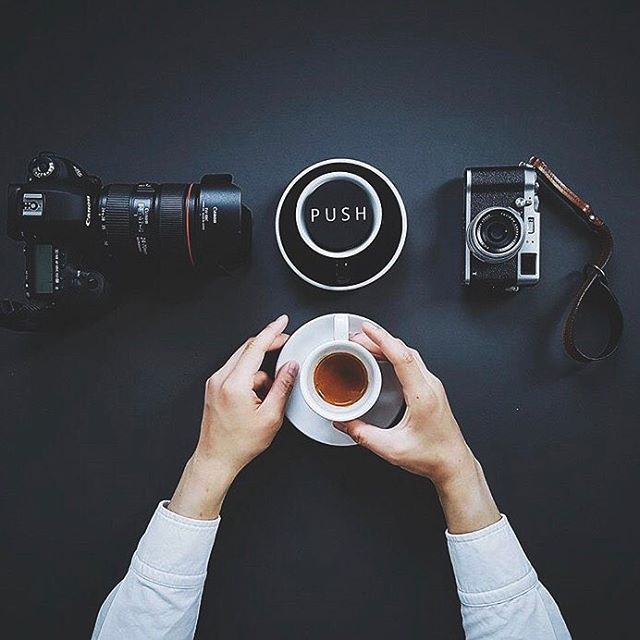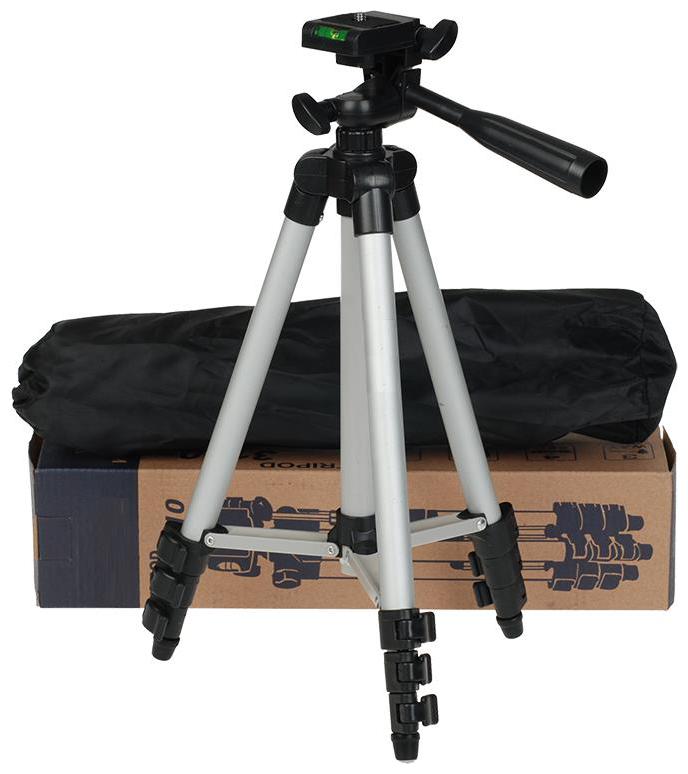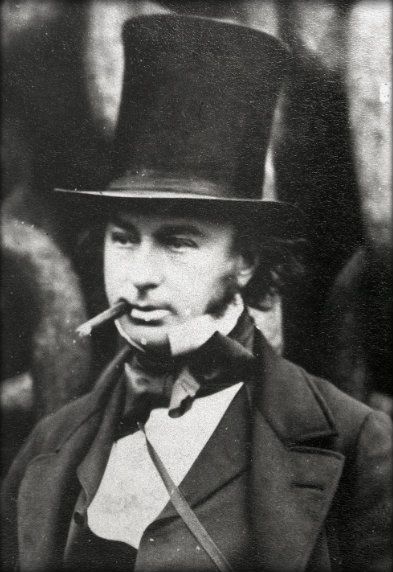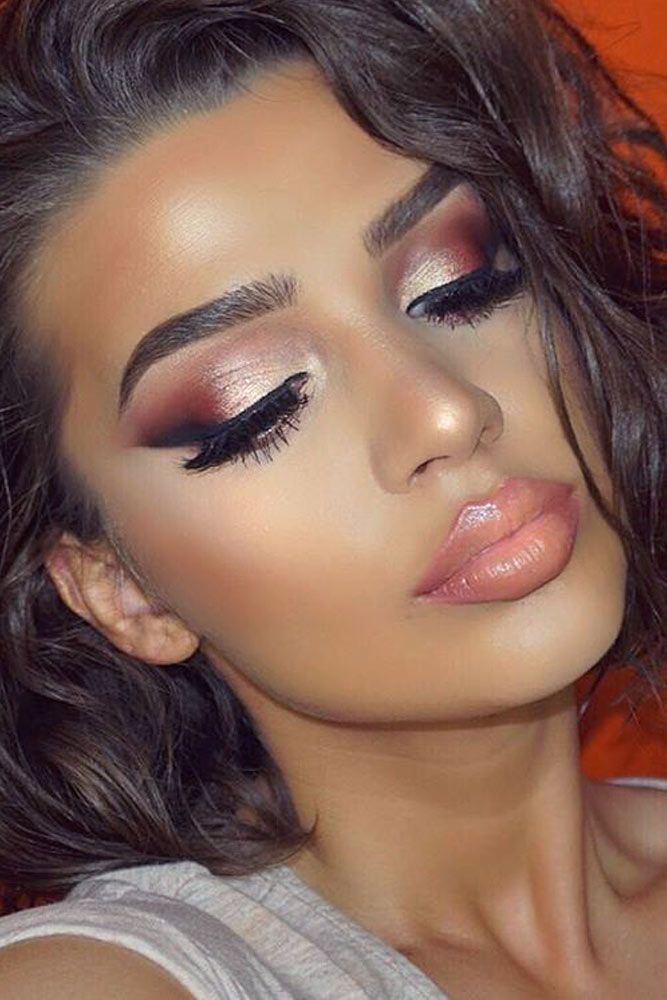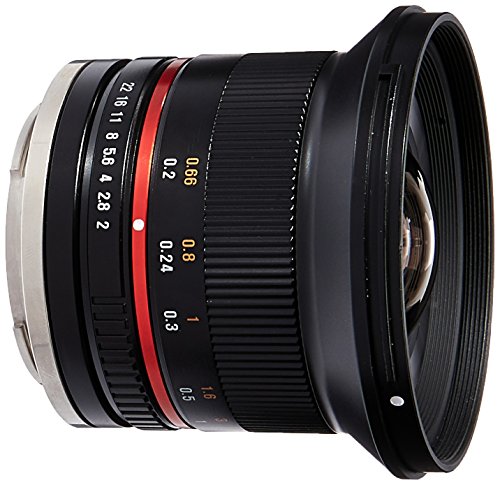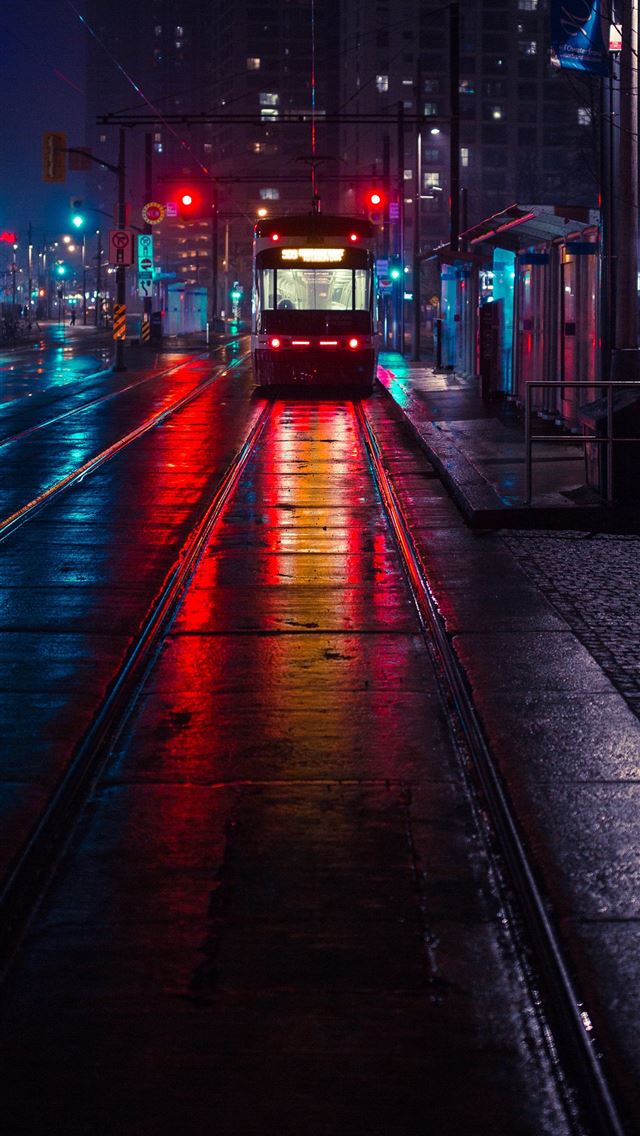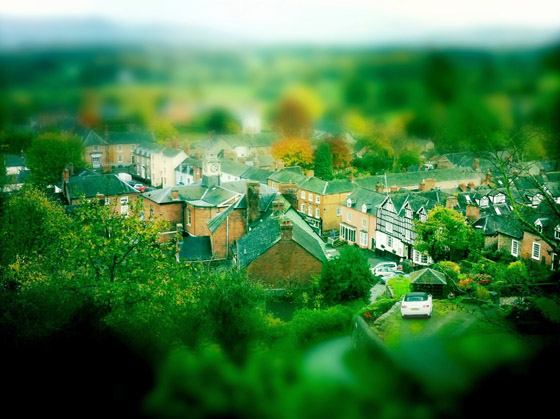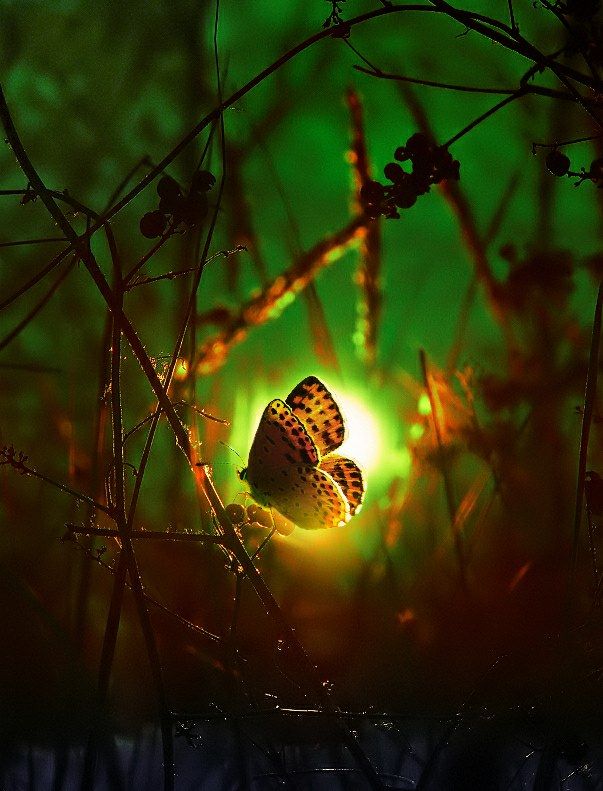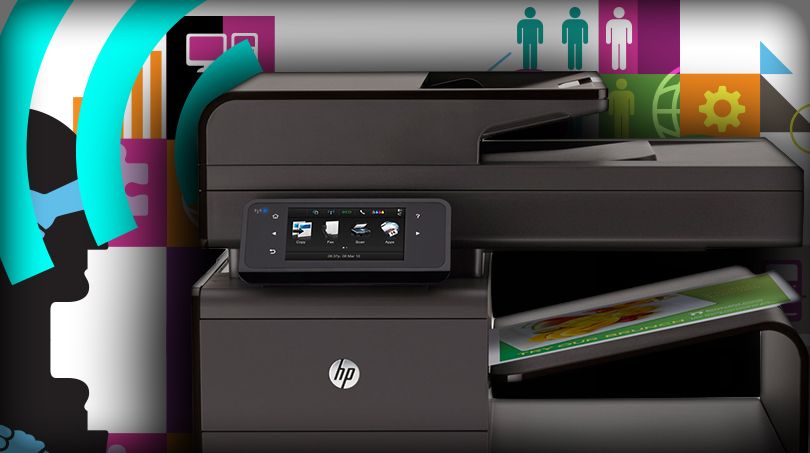Creative self portrait photo ideas
21 Creative Self Portrait Photography Ideas You Should Try
Self-portrait photography was the first photography genre I fell in love with. It entered my life at the perfect time. I was yearning to express myself, get better at something new, and feel inspired.
Self-portrait photography provided me with plenty of inspiration. It also taught me how to find photo-worthy moments almost anywhere. That’s why I encourage every photographer to give it a try.
If you don’t know where to start, you’ve come to the right place. The tips and tricks in this article will teach you how to find inspiration and invest in the right equipment. You might think it becomes repetitive, and you will lose motivation. If your subject is the same, how can you get creative? Don’t worry. We have the solution!
We also provide you with 21 creative self-portrait ideas so that you don’t end up with the same composition.
Essential Equipment for Self-Portrait Photography
Starting with the right equipment will make self-portrait photography easier. A tripod and a remote are essential tools. They’re both very affordable and enduring. Investing in them is something you won’t regret.
A sturdy tripod will keep your camera safe, while a remote will let you use your timer from a distance. This will save a lot of time and help you focus more on the quality of your work.
Lighting is another crucial aspect of self-portrait photography. Natural light can look great. But you have very little control over it. You can use additional lighting to give yourself more creative freedom.
A ring light is perfect for self-portraits. They provide soft and evenly spread light. You can use them to remove unwanted shadows on the face. Or you can use them for directional light.
Reflectors are another excellent tool for light control. A mirror works well as a DIY reflector if you don’t have the budget.
21 Self-Portrait Photography Ideas to Inspire You
In the beginning, you might feel lost. You don’t know what poses, facial expressions, and decorations to use.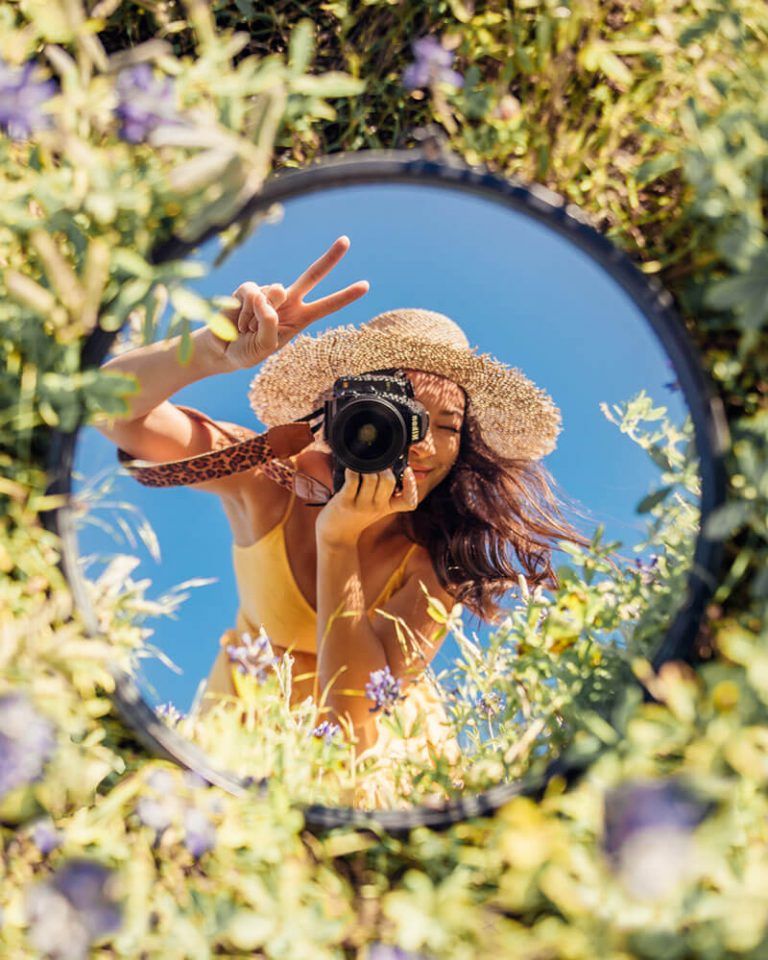 Find portrait photographers you admire, try to recreate their work, and ask them for advice. By experimenting with different styles, you’ll find your style.
Find portrait photographers you admire, try to recreate their work, and ask them for advice. By experimenting with different styles, you’ll find your style.
Some of the most influential artists in my life are self-portrait photographers. Check out Rosie Hardy or Sophie Eggert for some ideas. Getting photography inspiration from others helps me when I lose creative motivation.
This is why I’d like to share these creative self-portrait ideas. They will spark your imagination, encourage you to look at things differently, or make you laugh. Feel free to adopt any of these to better suit your photography style.
1. Create Characters Through Props and Costumes
Self-portraits are an excellent way to explore and express yourself. But you can also use them as a means of escape. By using props and costumes, you can create a whole new persona. It can be an alter-ego—an expression of your inner desires or interests.
Building characters with self-portrait photography is a fantastic storytelling device.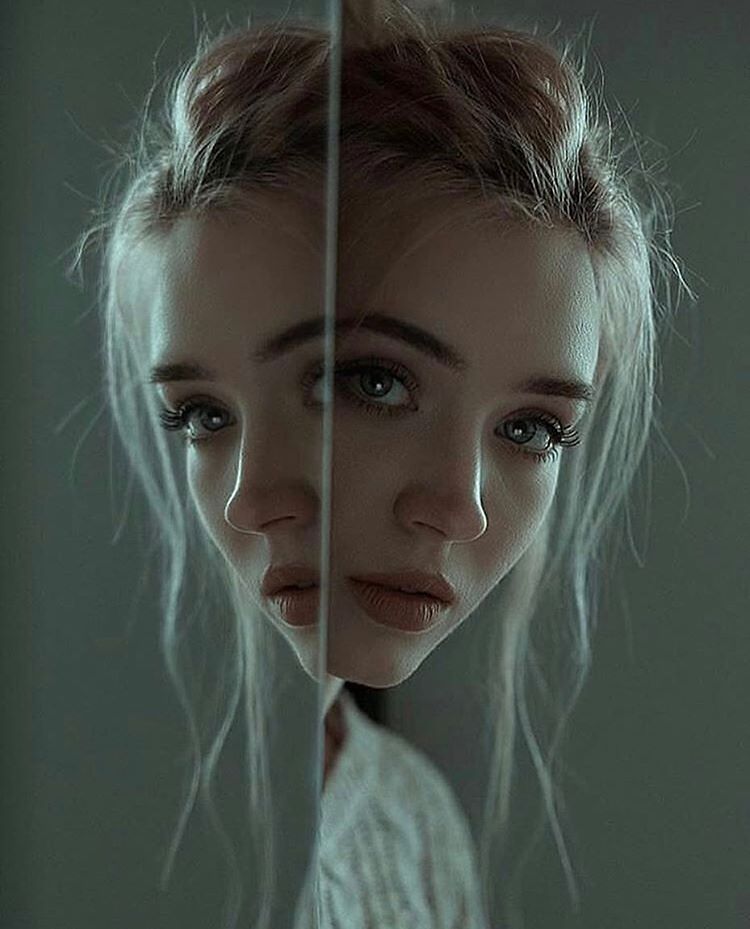 The props and costumes you use can create new characters. They can be protagonists in wild adventures or magical fairy tales. Jovana Rikalo uses elaborate costumes to build fairy tale characters. These characters inhabit her imaginative stories and landscapes.
The props and costumes you use can create new characters. They can be protagonists in wild adventures or magical fairy tales. Jovana Rikalo uses elaborate costumes to build fairy tale characters. These characters inhabit her imaginative stories and landscapes.
2. Add Rainbows
Vibrant colors and faces work very well together. If you don’t want to spend money on a prism, you can still create a stunning rainbow effect. All you need is a CD and a flashlight. Make sure the shiny side of your CD gets as much light as possible. Move it around until you have colorful stripes on your face. To make this process easier, use a mirror, a tripod, and a remote.
3. Photograph Your Silhouette
Silhouettes are great for those who don’t want to show their faces or those who want to look like someone else. These photos work very well with a shallow depth of field because of the resulting bokeh. It creates a soft, dreamy look.
To create a silhouette, stand in front of a background that is brighter than you. Make sure you stand so that it highlights the outline of your face. Then experiment with no fear!
Make sure you stand so that it highlights the outline of your face. Then experiment with no fear!
4. Transform Silhouettes into Double Exposures
Silhouettes are ideal for creating double exposures. A dark outline against a bright background is all you need to make artistic self-portraits. I often create double exposures out of pure curiosity.
You don’t need to have a groundbreaking idea in mind to create something fascinating. All you have to do is combine a photo of your outline with an image that complements your photo.
5. Use DIY Backgrounds for Self Portrait Photography
DIY photography is cheap, easy, and accessible to anyone. Make backgrounds out of fabric, bed sheets, curtains, clothes, or anything else that catches your eye. The background in the photos below is a simple curtain that I taped to the wall. Though it’s wrinkled, it gives my self-portraits an exciting texture.
6. Do Something You Really Enjoy
Take a series of self-portraits in your happy place, wherever that is.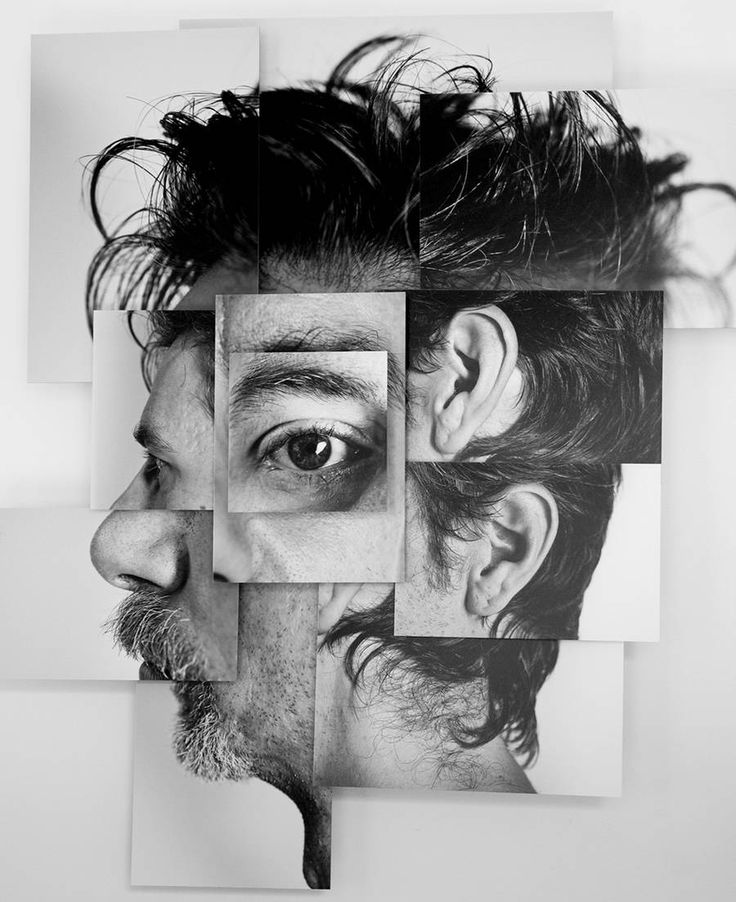 It will make the shooting process enjoyable and allow you to make the most of several hobbies at once.
It will make the shooting process enjoyable and allow you to make the most of several hobbies at once.
I enjoy playing the guitar (as you can see), reading, and exploring. These are all interests that I can combine to show my love for both photography and life. Think about your interests, and then figure out ways to connect them in one photo.
7. Take Photos with Your Pet (Or a Person!)
Pets are photogenic, so why not include them in your photos? If you own a pet or live next to someone who means a lot to you, take a photo with them.
Getting support during a self-portrait photography session will give you comfort, warmth, and lots of ideas. It will also strengthen the bond you have with your loved one.
If your pet doesn’t enjoy sitting still, don’t force it. Experiment, be silly, and don’t be afraid of making mistakes. Experimental photos end up being the best ones, anyway.
8. Transform Yourself Using Wigs and Costumes
Many people avoid self-portrait photography because they don’t feel attractive enough.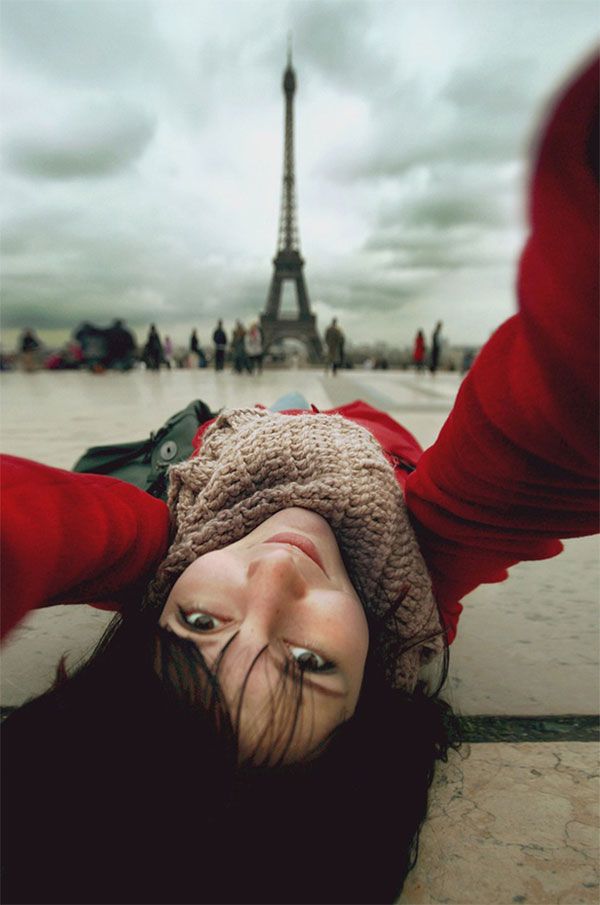 Instead of feeling bad about your appearance, transform yourself! If you don’t want to take photos of yourself, why don’t you become another person?
Instead of feeling bad about your appearance, transform yourself! If you don’t want to take photos of yourself, why don’t you become another person?
Wigs and costumes, regardless of their quality, look great in self-portraits. A cheap brown wig will look stunning in a close-up self-portrait, even if it looks unflattering in real life. Using costumes and wigs is fun and helps you take impressive self-portrait photos.
9. Focus on Details
Self-portraits don’t have to be photos of a face. They can be photos of hands holding something beloved, feet splashing in a puddle, or a faceless figure admiring its surroundings in nature. Details like these are as valuable as a photo of your face.
Look around, find a detail that catches your eye, and interact with it while taking photos. Other details you could take photos of are parts of your body like hair, hands, or eyes.
10. Get an Interesting Headdress (Or Make Your Own!)
Hats, flower crowns, and other fancy headwear look fantastic in photos.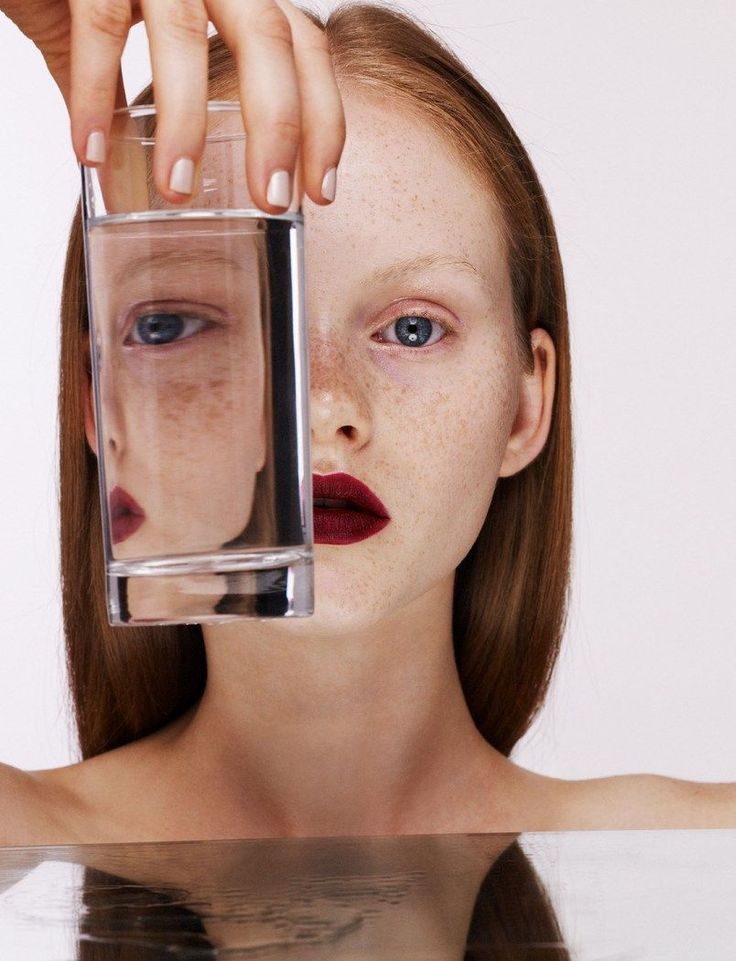 If you’re feeling extra artistic, make your own headdress using flowers (like I did), branches, fabric, or anything else. The world is your oyster when it comes to DIY photography!
If you’re feeling extra artistic, make your own headdress using flowers (like I did), branches, fabric, or anything else. The world is your oyster when it comes to DIY photography!
11. Be Silly
Many people feel awkward at the beginning of a self-portrait session. You get more comfortable if you practice different expressions in the mirror. You can also accept your flaws and become your own parody.
Pull different facial expressions, move around, and make yourself laugh. Though I can’t guarantee that the results will please you, I can promise that they will bring a big smile to your face.
12. Shoot Through Objects
Partly covering your lens will result in experimental and creative self-portraits. Shoot through things like lights, hands, and branches if you want to do so. You can use branches to create a frame around your face or add an interesting element to your photos. Steam can create eye-catching shadows.
If you want a fuller effect, shoot through windows for brilliant reflections, or cellophane for a dreamy effect.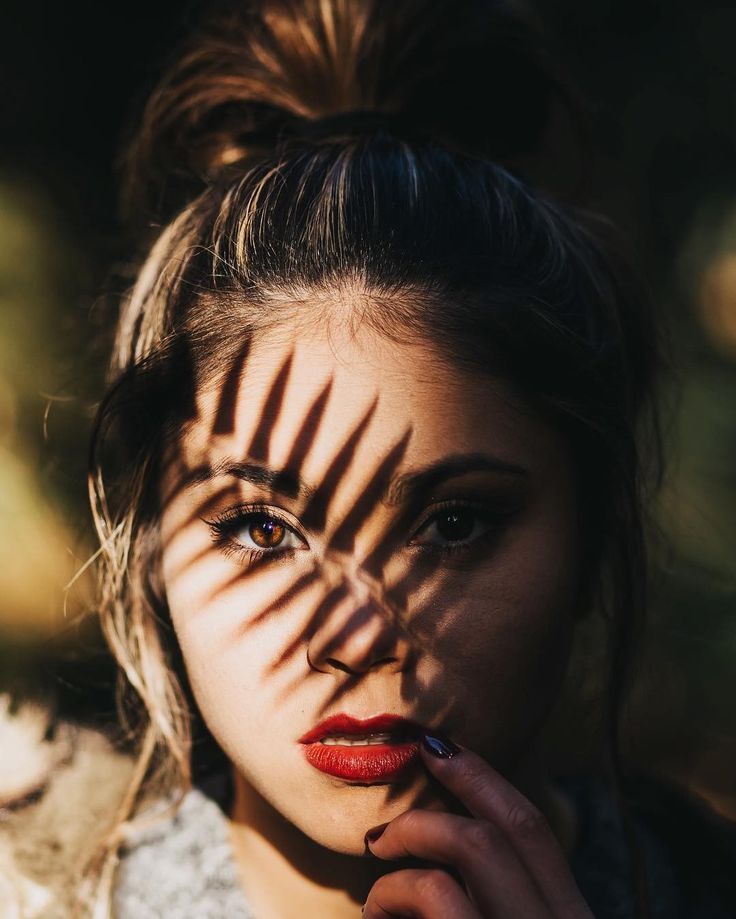 Use bokeh filters to transform them into hearts, stars, or other shapes. You can use almost anything in a composition to make creative self-portraits. Use the entire object or only parts of it.
Use bokeh filters to transform them into hearts, stars, or other shapes. You can use almost anything in a composition to make creative self-portraits. Use the entire object or only parts of it.
13. Hide Parts of Your Face
Instead of taking photos of your entire face, focus on one area only. I like to cover parts of my face with curtains, hair, and blurred foregrounds. This concealment highlights my eyes and challenges me to make the most of only one feature.
The best thing about “hidden” self-portraits is that you don’t have to go far to take them. It’s possible to take simple yet cool self-portraits right now!
14. Pretend You’re in a Movie
If you are like me and love cinematic portraits, you’ll enjoy acting in front of the camera. Create a story in your mind, visualize the scenes, and recreate them through self-portrait photography.
Your idea doesn’t need a complicated twist or a surprising ending. Add two black lines above and below your photos in the editing process.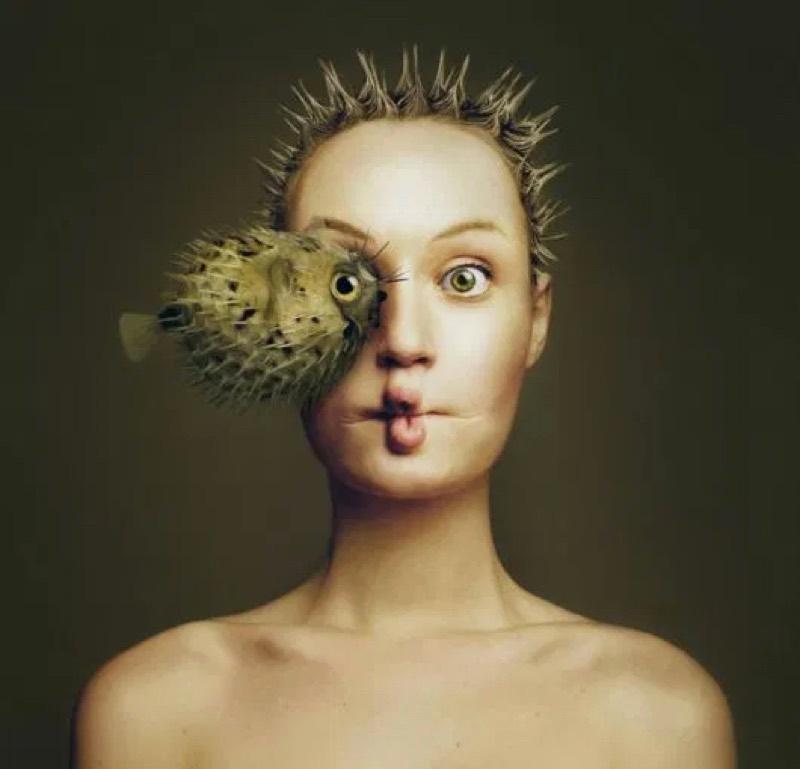 You can even crop them, so they look more like film stills. Doing this is a great reason to rewatch films to get even more inspiration for future projects.
You can even crop them, so they look more like film stills. Doing this is a great reason to rewatch films to get even more inspiration for future projects.
15. Shoot in Black and White
Black and white portraits are a special genre of their own. If there’s an emotion you’d like to emphasize, experiment with B&W photography. It will highlight your feelings and add texture to details you might otherwise ignore. It also gives you more experience in the genre.
16. Go Limited
Having too many options at once can feel paralyzing. Limiting yourself by shooting at only one location can improve your work.
Do a photoshoot in one room and make the pictures look like you took them in different locations. It will not only give you a fun project to work on but force you to look at your surroundings from a new perspective. This challenge will also make you focus on details that you usually overlook.
It will improve your general creativity and sharpen your ability to notice great things in simple places.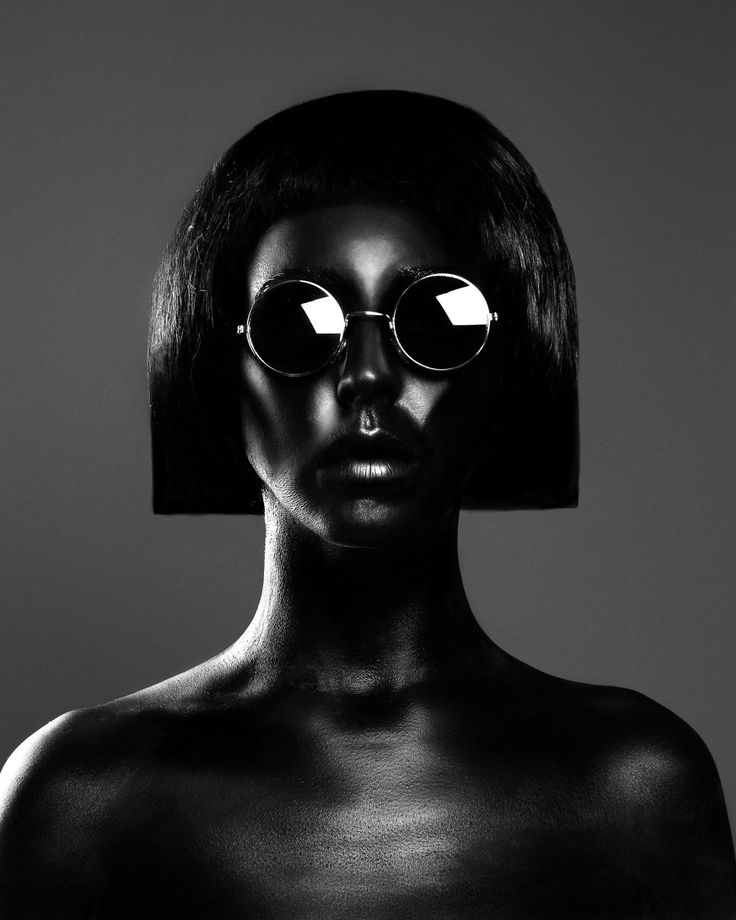 What you learn during this process will come in handy in every future shoot.
What you learn during this process will come in handy in every future shoot.
17. Make a Diptych
A diptych is a “collage” made of two photos. These images often contain many subjects that tell a detailed story about the photographer. This is particularly handy in self-portraiture.
You can combine a simple photo of yourself with a gorgeous photo of nature. Diptychs come in handy when you have two photos you like a lot. Instead of choosing one, you can use them both at once!
18. Stick to One Color at a Time
Pick a single color and create a self-portrait photo series inspired by it. Though the photos don’t have to feature one color only, they should all have a similar color scheme.
This project will refresh you, challenge your imagination, and give you a chance to unleash your creativity. Plus, you can base the photoshoot on the clothes in your wardrobe.
19. Experiment with Shadows and Lighting
My favorite portrait photographers are excellent at shadow-play.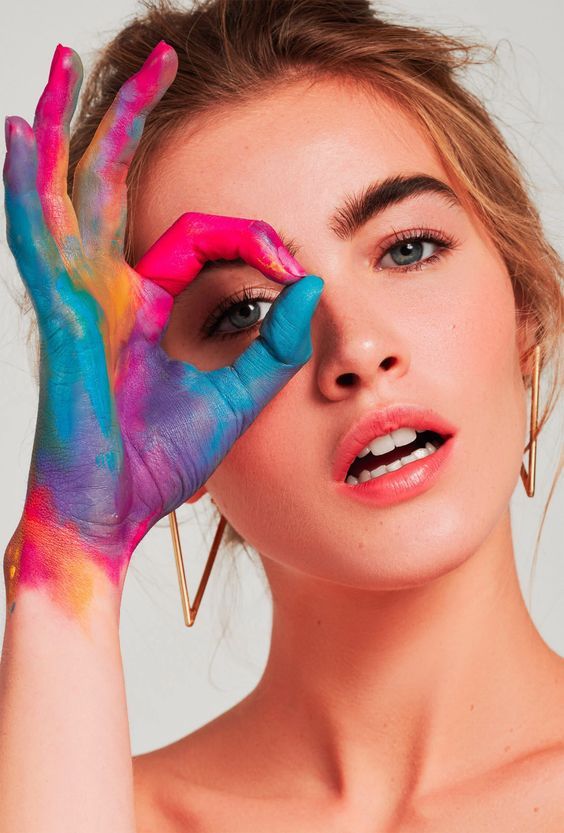 You can do so much with the help of a single light source and a pattern.
You can do so much with the help of a single light source and a pattern.
Give yourself as much freedom as possible when you experiment with light. Use sun hats, curtains, hands, or plants to create incredible, creative self-portrait photography.
Light is a priceless tool that can make the simplest portraits look fantastic. When you become a master of light, you become a master of photography. Take photos both indoors and outdoors, and don’t be afraid to break the rules as you do.
Don’t be scared of working with artificial light. You don’t need to invest in professional lighting equipment. You can use any indoor light you own to take creative self-portraits. I often use a lamp to light my face because it lets me experiment with new angles and styles. I don’t have to worry about time, which isn’t the case when it comes to ever-changing natural light.
20. Stitch Photos to Make a Panoramic Self Portrait
Panoramas are fun to make and pleasant to look at.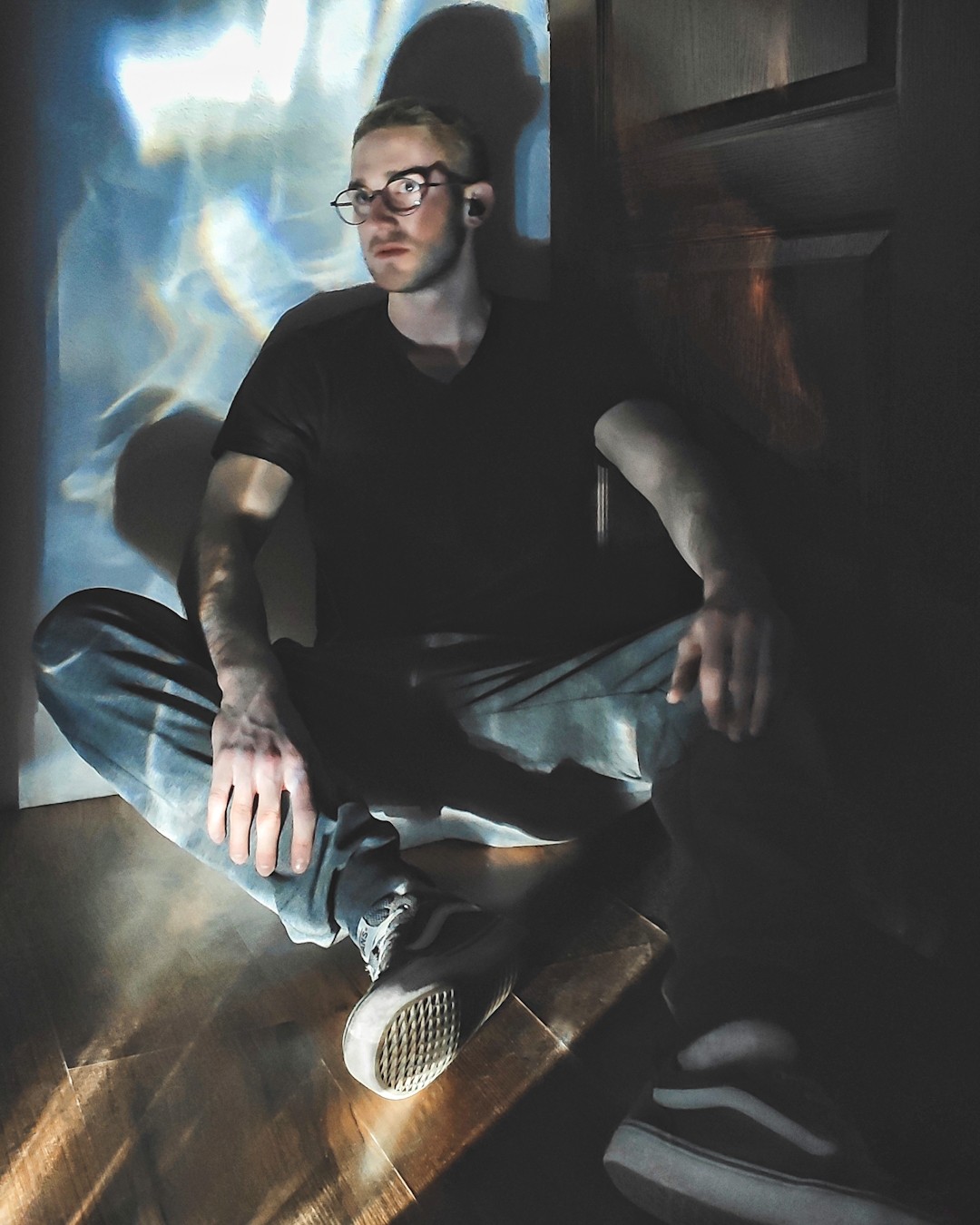 This is how I make mine:
This is how I make mine:
- I take vertical self-portraits that don’t crop any of my limbs and leave space around me using a tripod.
- Then, I go back to my camera and take photos of the areas I’d like to stitch. I make sure that I don’t make any quick movements or position myself in another location.
- After that, I import my photos into Lightroom. I select the photos I’d like to stitch and go to Photo > Edit In > Merge to Panorama in Photoshop.
- Finally, I color correct the results.
21. Document the Seasons
Each season has something worth photographing. Take self-portraits every season. This way, you can work on a year-long project. The results will give you pleasant memories, show you every side of nature’s beauty, and impress others.
If a long-term project doesn’t excite you, make the most of the current season. Think of what you like about it. It could be the blooming sunflowers of summer or the colorful fallen leaves of autumn.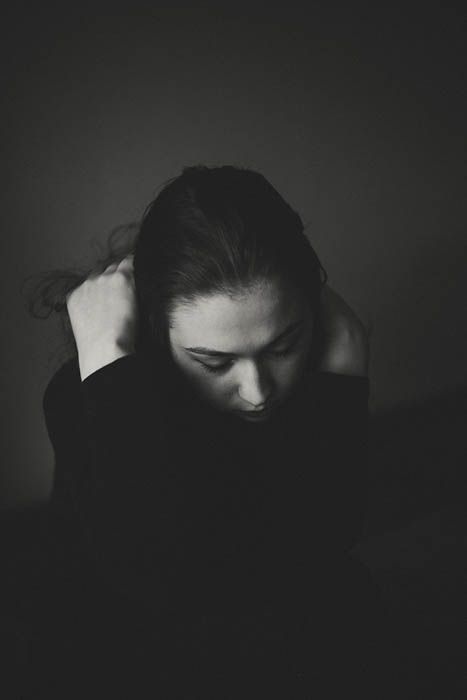
Photograph that and include yourself in it.
Conclusion
Taking photos of yourself will improve your self-confidence and develop your creative eye.
Like any photography genre, self-portrait photography needs to be meaningful and touching. Every photographer has a unique creative purpose. If you don’t know your purpose, don’t lose hope. Don’t be afraid of making mistakes. This is how we learn! The more you practice, the easier the challenges will get.
Hopefully, these ideas will encourage you to go out and explore the wonderful world of self-portrait photography. Remember, you and your camera are everything you need to take a great photo of yourself.
Check out our Creative Portrait Concepts e-book to learn how to take mind-blowing portraits!
23 Creative Self Portrait Photography Ideas & Tips
Self-portrait photography is a wonderful way to awake your creativity and practice your skills.
In this article, you’ll find some technical tips to get you started from scratch, or to improve your existing self-portrait photography skills.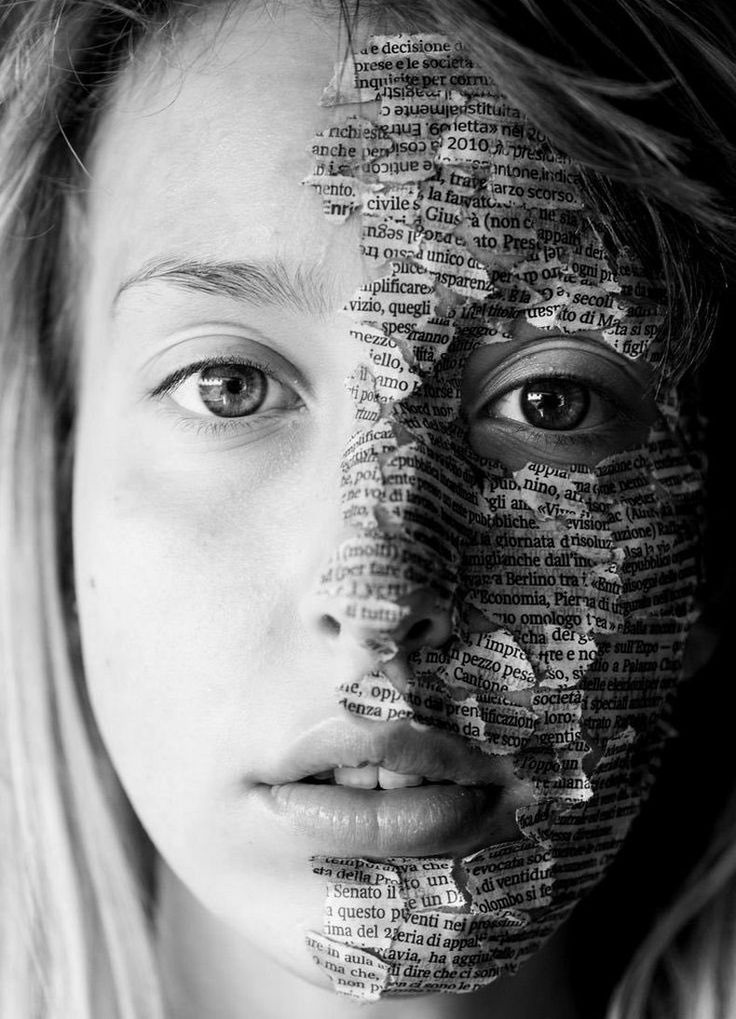
You’ll also find a bunch of ideas for cool self-portraits and cool profile pictures that will make you fall in love with this fun photography genre!
Even if you’re a shy photographer, you’ll find some great self-portrait ideas that you can implement and overcome your fears.
So, let’s dive in!
Table of Contents
23 Self Portrait Photography Ideas
If you’re struggling to find inspiration on how to take pictures of yourself at home, here are some creative self-portrait ideas (with examples) for you to awake the artist – and model! – in you.
1. Use mirrorsCredit: Maddog
When you’re the photographer and the subject simultaneously, it isn’t easy to learn how to compose the image and focus correctly.
That’s why using a mirror is one of the best ways to start; this way, you can be holding and controlling the camera as you pose.
The tricky part is to find a way to do it creatively and not fall into all the mirror selfies and self-portrait cliches.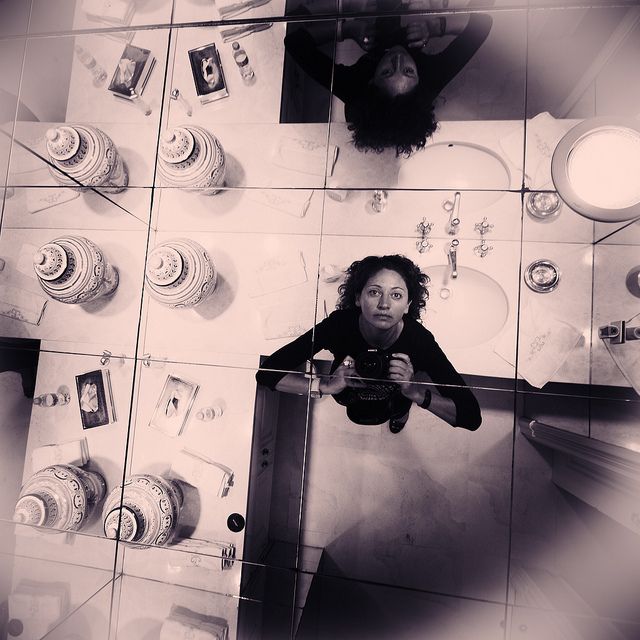 On the other hand, that’s something that can happen in any photographic genre – you have to find your own voice.
On the other hand, that’s something that can happen in any photographic genre – you have to find your own voice.
See also our guide on how to take good selfies.
2. Give low key lighting a chanceCredit: Roberto Lee Cortes
Low-key is a type of lighting that’s predominantly dark, with highlights only in the focal points. It can create very eye-catching images.
To achieve these images, you need to set your camera’s metering mode to spot metering. This way, you can measure the light from the highlighted area and darken the rest. Otherwise, the camera will try to compensate and brighten the shadows, overexposing the subject.
If you’re using any of the semi-automatic modes, you can use the exposure compensation feature. Adjust the original exposure with -1 EV or -2 EV. This tells the camera to underexpose your photo.
See also our guide to low key vs high key lighting.
3. Add some motion blurCredit: Simon Migaj
Another cool self-portrait idea is to incorporate motion blur.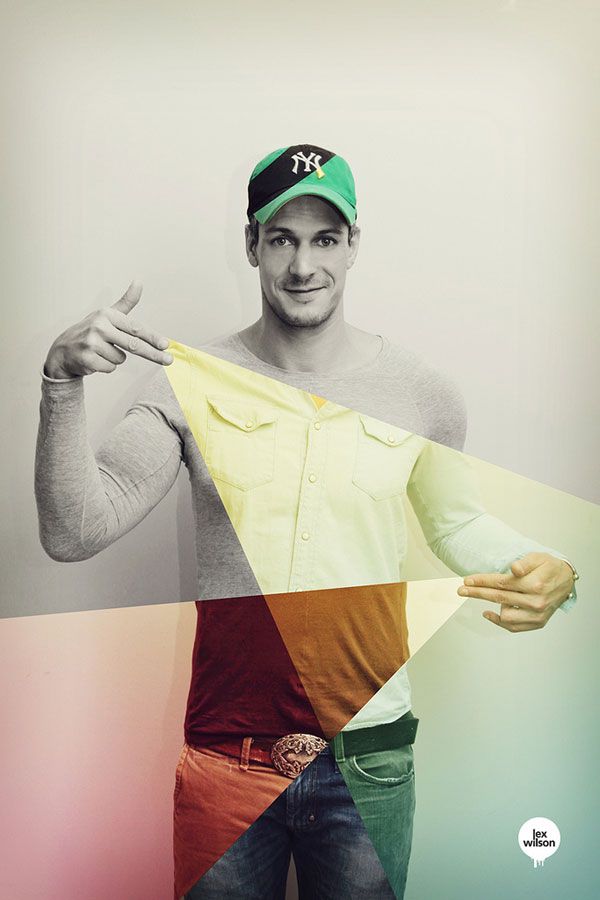 This means that you’ll leave a trail when you move. To make this kind of photo, you need to use a slow shutter speed.
This means that you’ll leave a trail when you move. To make this kind of photo, you need to use a slow shutter speed.
Depending on how fast you’re moving and how blurred you want to be, you’ll need to try different shutter speeds. So don’t settle for the first result – keep on experimenting.
4. Make a no-face self-portraitCredit: Life of Pix
Although some people consider only the images where you’re showing your face to be a self-portrait, many other artists contend with this idea.
You can make a fascinating self-portrait with any part of your body. Give it a try and decide which side of the argument you agree with.
5. Recreate an artworkCredit: снежана
Self-portraits go as far back as 15th-century paintings, so if you’re looking for inspiration, you can look to any of the masters.
Actually, why limit yourself to self-portrait inspiration when you have the entire art history? Find your favourite artwork and recreate it.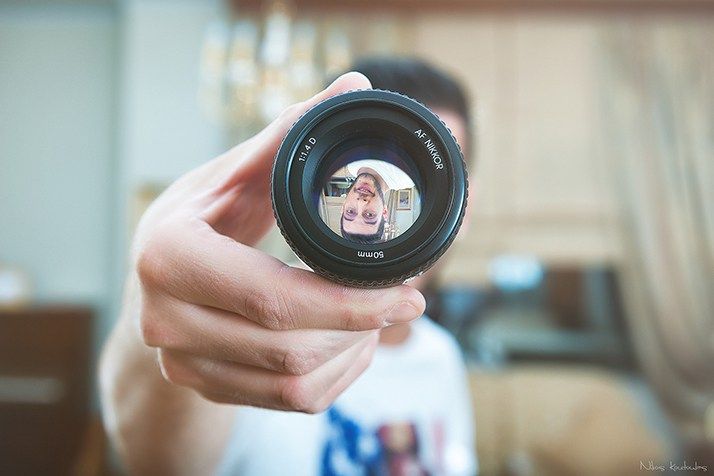
There’s a fun trend on Instagram where people are doing just that. It’s ripe with self-portrait photography ideas – search for the hashtag #betweenartandquarantine to check it out.
We’ve also written an interesting article on photos inspired by famous paintings which will give you some more ideas.
6. Put something between you and the cameraCredit: олег-орлов
This is a great opportunity to get a creative self-portrait because you can do absolutely anything. You can shoot through a window to incorporate some reflections, or you can put some objects that hide a part of your face.
You can also play with perspective by placing the object closer or further away. You have total freedom here; the only limits come from your imagination.
7. Make a collageCredit: Tuan Kiet Jr.
When one self-portrait photo isn’t enough to tell your story, take two or three and make a collage.
Many apps do this for free with preset templates, or you can build your own collage in Photoshop or experiment with the collage features in Lightroom.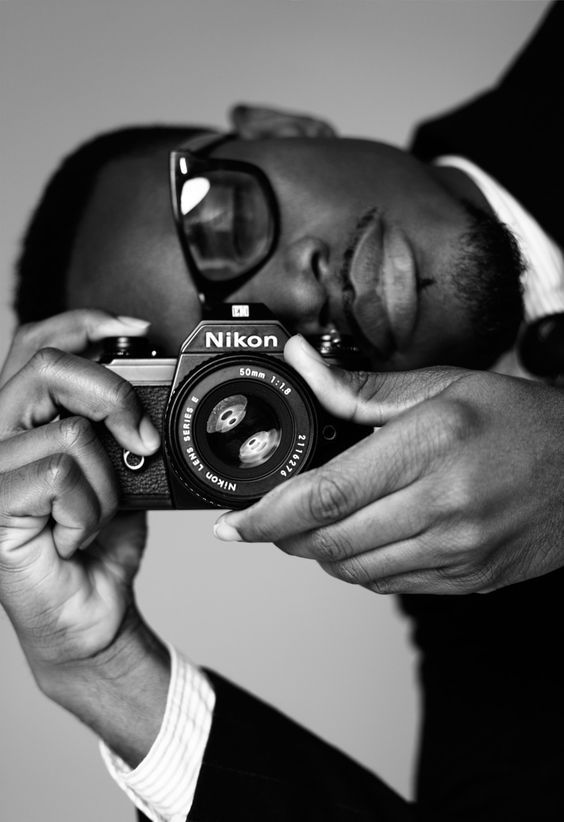
Credit: Daria Sannikova
Another way to show more than one picture in a self-portrait is to use a double exposure (see guide). The idea is that two (or more) exposures are overlapping in the same frame. This will give a ghostly-creative feel to your picture.
Most cameras offer a multiple exposure feature that can be enabled in the menu. If your camera doesn’t have it or you prefer to do it in post-production, it can be done in any editing software that allows working with layers.
9. Try some action shotsCredit: Zachary Debottis
Who says that you have to be posing for your self-portrait? You can also be doing sports or your favourite activity.
To better capture an action shot, you can try burst mode. Burst mode tells your camera to shoot many photos per second, ensuring that you capture the best moment.
If you’re using an iPhone, you can set the burst mode with a self-timer and use a smartphone tripod or stand to prop up the phone to do this kind of shot.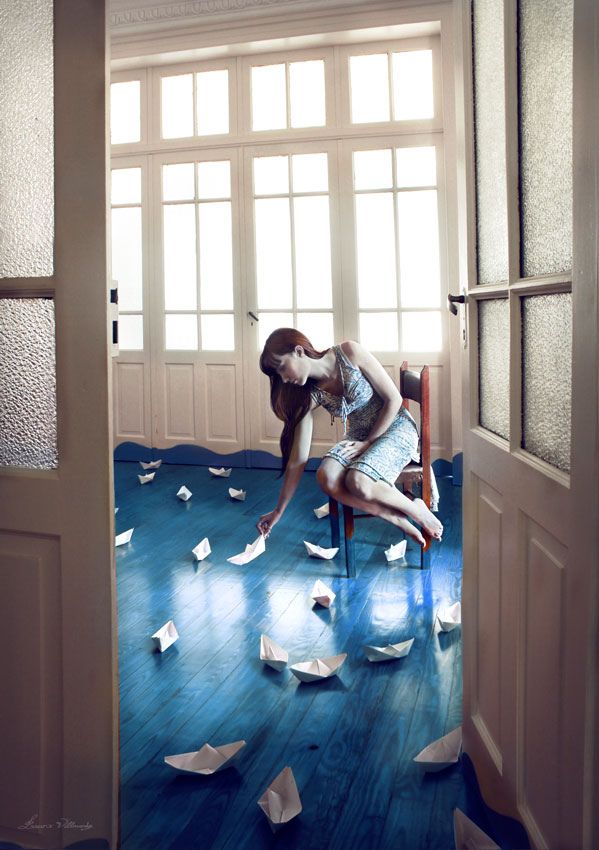
Alternatively, you can use a DSLR and control it with a remote or find one that has an interval shooting function.
10. Photograph your silhouetteCredit: Pixabay
Catching yourself in silhouette is another creative way to make a self-portrait. To do this, you have to position yourself with the light coming from behind.
Sunsets are particularly popular; however, you can also use artificial light.
What settings should you use for silhouette photography? To achieve the best results, you have to use spot metering mode to calculate the exposure.
Then, adjust the settings manually or using any of the semi-automatic modes. Then when editing, use the ‘blacks’ or ‘shadows’ slider to really accentuate the silhouette portion of your image.
11. Try a close-up portraitCredit: Rodolfo Clix
If you’re a fan of self-portraits that show your face, you can try doing some close-ups. This is a creative way to show only a part of your face; you can focus on the mouth or the eyes.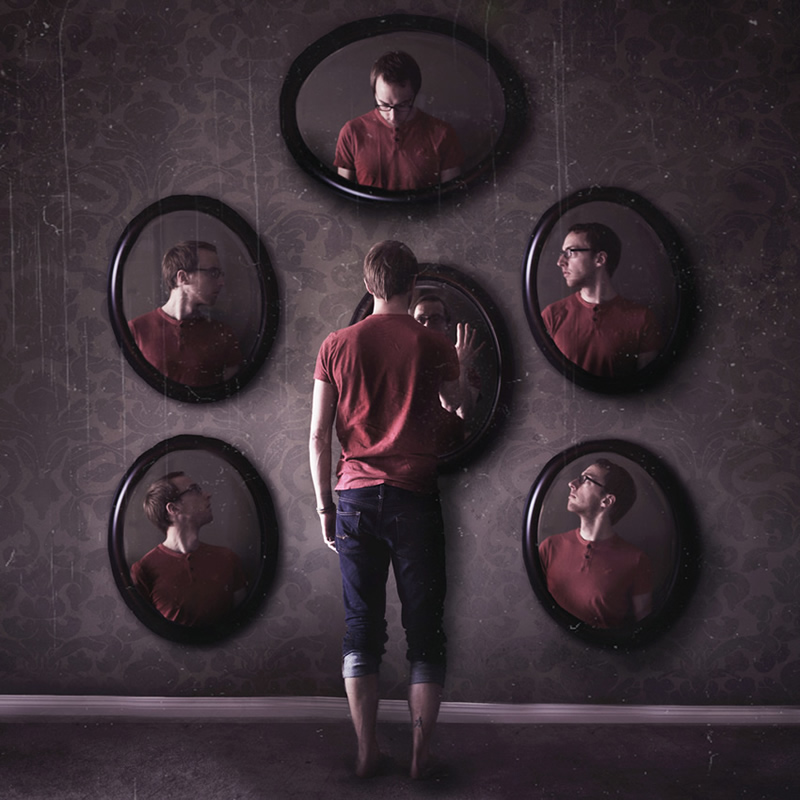
The best lens for taking a close-up self-portrait is a short telephoto or macro lens – this way you’ll avoid any distortions and be able to really highlight one section of your face or body.
However, a standard 50mm lens can be good too. This allows you to shoot at a shorter distance, which is good when you’re both the model and the photographer. The choice is yours.
12. Go black and whiteCredit: Elizaveta Dushechkina
Black and white photography is perfect for giving a nostalgic feeling to your self-portraiture because it reminds us of the first years of photography where color didn’t exist.
You can also use it for making creative and surreal self-portraits. Since we naturally see in color, black and white is perfect for creating a dream-like atmosphere; something that isn’t real.
Another way to limit the color palette is by switching your camera to a monochromatic mode – most cameras offer this, but if you can’t find the setting, have a go with an Instagram filter instead.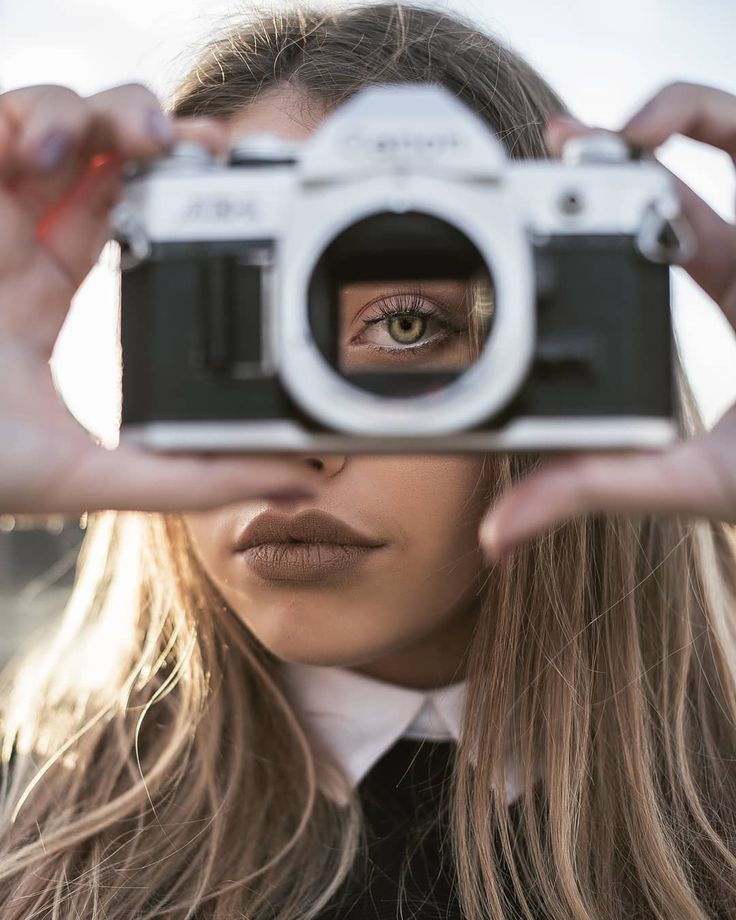
Credit: Uncoveredlens
Exploring your inner self can be quite complex. If it’s something you’re willing to delve into, making an art project out of it can be the right choice for you.
For self-portrait photography inspiration, you can follow contemporary portrait photographers such as Laura Zalenga and Kyle Thompson. You can also go back in history and look at the works of Moholy Nagy, Man Ray and Claude Cahun.
14. Dress-upCredit: Marx Ilagan
This can be as fun as Halloween costumes, or as deep as Cindy Sherman’s construction of identity projects. The choice is yours.
It can also be a cool self-portrait idea for shy photographers who don’t feel comfortable in front of the camera.
15. Play with reflectionsCredit: Francesca Zama
Working with reflections is one of the most popular portrait ideas, and it works wonders for a self-portrait as well.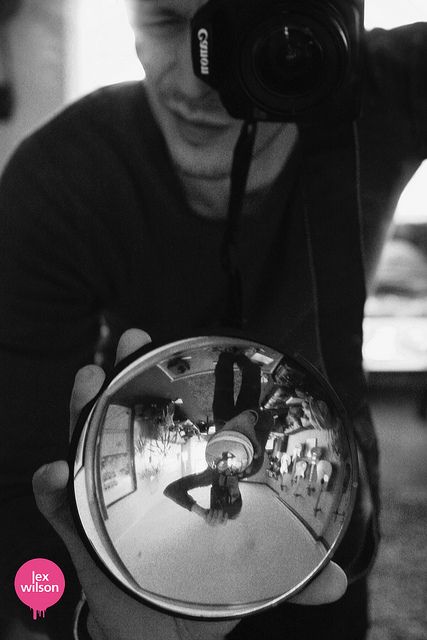 Find any reflective surface, whether it’s water, glass, or certain kinds of floors, and compose your image.
Find any reflective surface, whether it’s water, glass, or certain kinds of floors, and compose your image.
Remember that reflections depend on lighting and the place where you’re standing, so make sure you take many pictures changing the angle of the camera.
16. Move to different locationsCredit: Khoa Vo
Self-portrait ideas can be inspired by the location of the shoot; it’s not just about you in a studio.
Try visiting different places to get inspired and take some cool self-portraits incorporating elements from your surroundings.
17. Change perspectiveCredit: Samantha Garrote
Experimenting with the angle of the camera can lead to some creative self-portraits.
Get the camera low on the ground to capture a worm’s eye view. Otherwise, use a gorilla pod mini tripod to wrap the camera on a tree branch and photograph yourself from above.
If you don’t have a tripod that allows this kind of perspective, use a normal one and place yourself in a different plane – you can use stairs or trees to change your position in relation to the camera.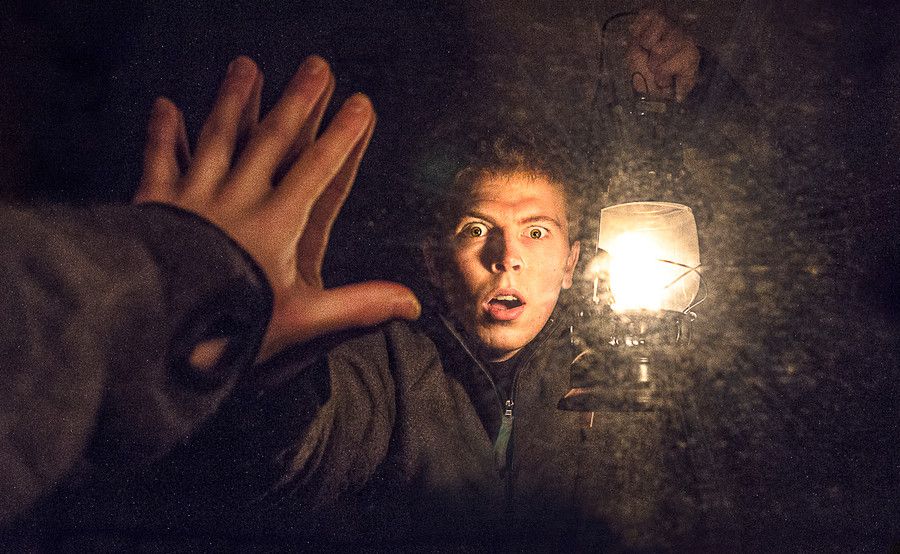
Credit: Alessandro Sacchi
With all the digital tools that we have, we forget about the multiple possibilities of manual work and crafts.
Try printing out some of your self-portraits and start making an old-school collage for an interesting self-portrait.
Cut and paste your images and even throw in the mix some cut-outs from magazines. Don’t forget that you can also print, write or paint on your artwork to make it more creative.
19. Use propsCredit: Andrea Piacquadio
Using props for your self-portraits can be a great help to express certain aspects of your personality. An object that you identify with can be the perfect way to complement your photo.
You can use books if you like to read, a globe if you like to travel, and so on. Also, you can use an object as a metaphor, so get as creative as you want.
20. Don’t be afraid of emotionsCredit: Engin Akyurt
As much as we like to see ourselves all beautiful and happy, the truth is that we can’t be cheerful all the time.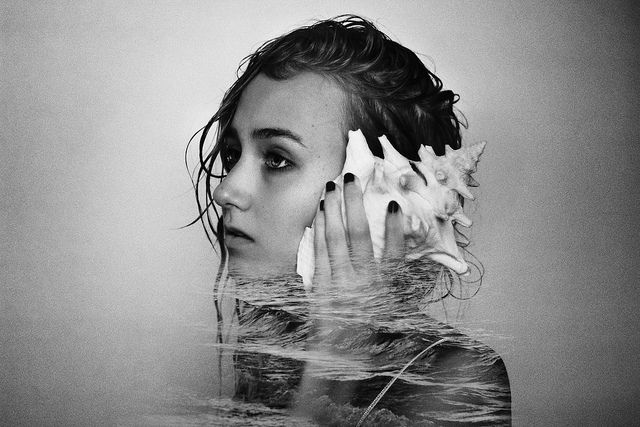 We feel all types of emotions, and we shouldn’t be afraid to capture a different facial expression in a self-portrait.
We feel all types of emotions, and we shouldn’t be afraid to capture a different facial expression in a self-portrait.
Let’s not forget the therapeutic power of art. Making photo stories can help us to overcome obstacles or hard times.
So remember, explore different sides of yourself and your different emotional worlds. You don’t always have to show a perfect smile.
21. Try different lightsCredit: Zszen John
If you’re looking for a self-portrait photography idea that will also challenge your photographic skills, this is it: try different lights.
It’s very easy to capture a well-exposed photo when you have good lighting, but what about candle lights, using gels, the neon sign at the entrance of a bar? After all, the lighting is a big part of forming a photography style.
Make sure you adjust the white balance because different lights have different color temperatures.
22.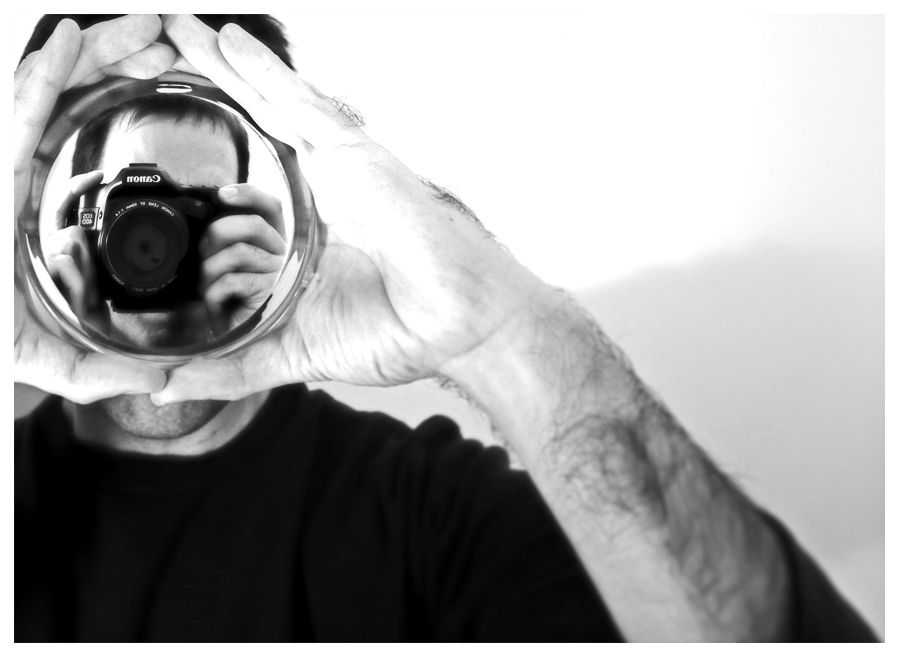 Find or build an interesting background
Find or build an interesting backgroundCredit: Mikel Parera
The background can make or break a photo. Find an interesting background for your self-portrait, and you’ll stand out more.
You can try doing some bokeh – which is the effect of the blurry area of your picture. To blur the background you need to use a wide aperture and a telephoto lens.
Also, stand closer to the camera and further away from the background. Each lens creates a different bokeh, and you can also modify it by using bokeh filters.
You can also easily blur the background using Lightroom or any other premium photo editing software.
23. Frame within a frameCredit: Rami Hammoud
To make your photo more interesting and make your face the focal point, you can always put yourself inside a frame.
Framing is also a good composition technique – instead of holding a picture frame in front of you, try to incorporate the elements from the scene.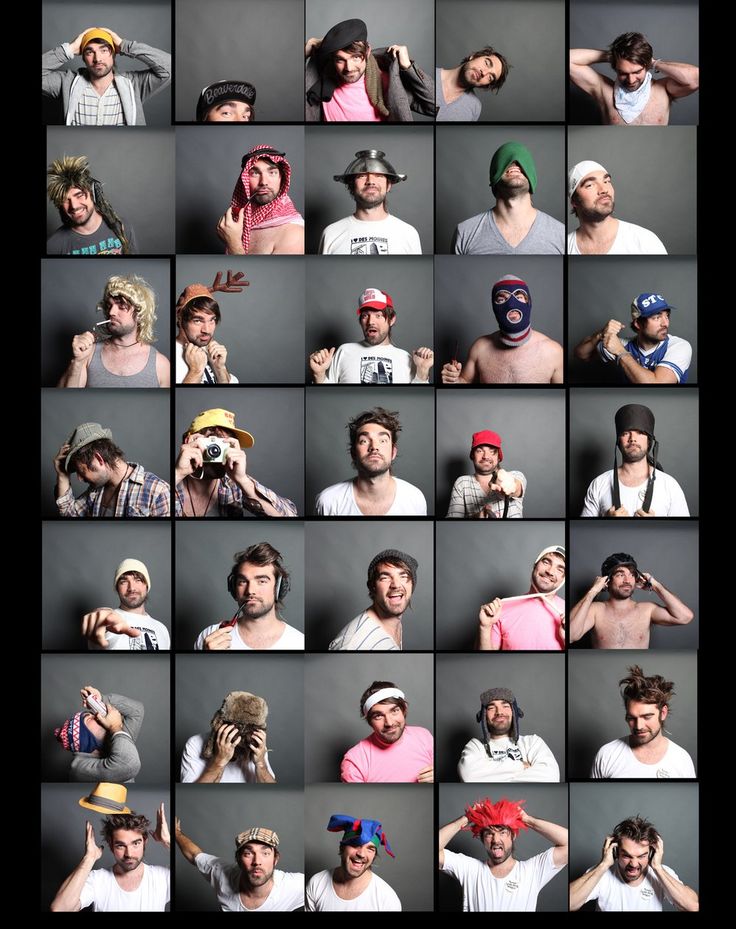
4 Tips for Better Self Portraiture
So, how do you take a portrait picture of yourself? It’s not as difficult as you might think. You only need a tripod and a camera. Then, follow these tips to achieve better self-portrait photography.
1. Remote shutter release vs self-timerEvery camera on the market has a self-timer to allow you to take self-portraits. Some of them even have different time settings – for example, 2 seconds and 10 seconds. With this feature, you press the shutter and run into position.
When you use the remote timer, you have the advantage of having your hands completely free in the photo. It’s also the budget-conscious choice because it’s a feature that comes by default.
However, running to the position is more difficult if you’re doing creative self-portrait photography, and you need to study your pose and expression.
To solve this problem, you can use a remote shutter release (see our guide). There are cable remotes and wireless ones, and they have a wide range of prices.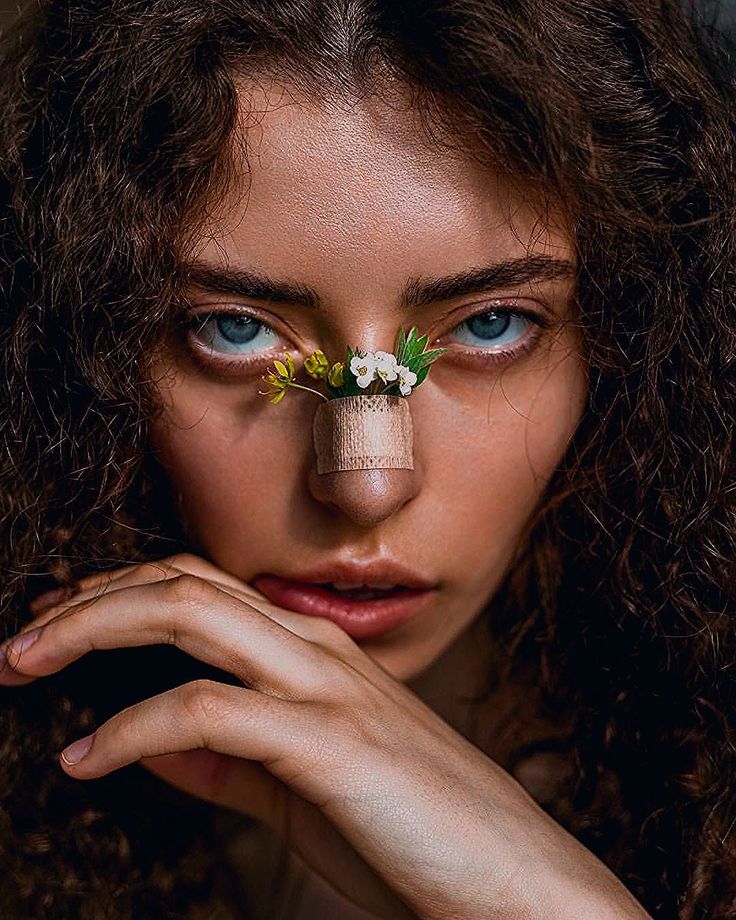
The more advanced ones have more choices, such as interval timers, but they’re more expensive. Research the options to find what’s right for your needs.
2. Find the best lightingCredit: Anete Lusina
Lighting is key to a good self-portrait. You need to decide what you want: natural light or artificial? Hard light or soft? Is it coming from the side or from above?
Normally, soft light is quite flattering, but hard light with strong shadows can create a very dramatic result. It all depends on what mood you want to create.
Also, consider buying some artificial lighting if you often photograph indoors or in low light situations.
You can also get some good lighting inspiration by studying the work of the great oil painters of the Renaissance period – this guide covers the most famous portraits.
3. Learn compositionCredit: Buse Doa
Learning the composition rules can improve your self-portraits in a way that you can’t imagine.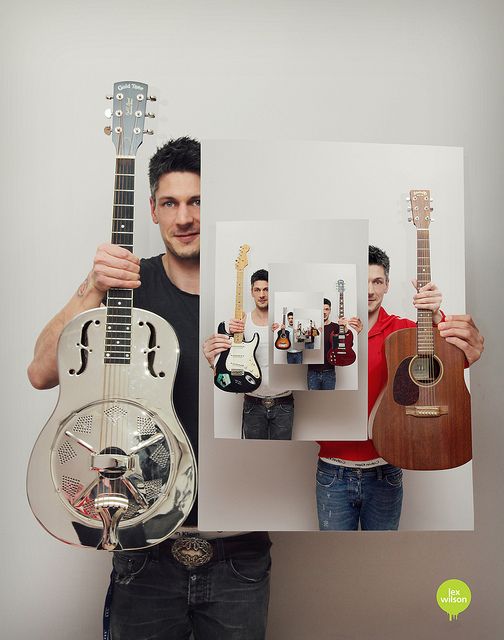 There are many different rules and guidelines that you can follow, starting with the rule of thirds – which is marked in every camera grid.
There are many different rules and guidelines that you can follow, starting with the rule of thirds – which is marked in every camera grid.
From there you can move on to more complex compositions.
4. Get control over the camera settingsMany of the self-portrait photography ideas above require the use of photography techniques that are difficult to master unless you really know how to use your camera (for example, motion blur or bokeh).
The exposure is controlled by three factors: shutter speed, aperture and ISO – this is known as the triangle exposure.
When you use your camera in manual mode, you control all three. However, you can start by using semi-automatic modes such as shutter priority or aperture priority. This way you can decide the final result.
See our complete beginner’s guide to camera settings here.
Self Portrait Photography FAQsDoes a self-portrait have to be of your face?
There’s some debate about the definition of a self-portrait.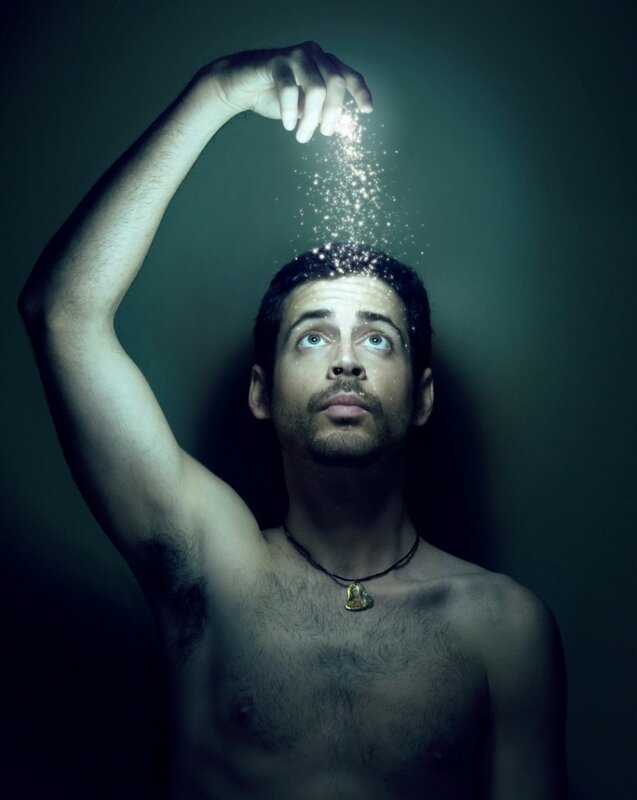 While some purists won’t consider it a self-portrait unless it shows a face, others believe it can show any part of the body.
While some purists won’t consider it a self-portrait unless it shows a face, others believe it can show any part of the body.
Fortunately, art is a discipline that’s always open to people breaking the rules – so you’re free to interpret the idea of self-portrait photography as you wish.
Why do photographers take self-portraits?
A self-portrait can be an experiment to better understand light, poses and photographic techniques. However, it can also be an art form in itself that’s done as a creative expression.
What is the difference between a self-portrait and a selfie?
When selfies first became “a thing”, they were done at an arm’s length (typically with a smartphone), and they were a spur-of-the-moment capture. As the genre has developed, the line between the selfie and the self-portrait has blurred.
I’d venture to say that the main difference is the intent. The selfie is more about sharing (normally on social media) and putting yourself out there.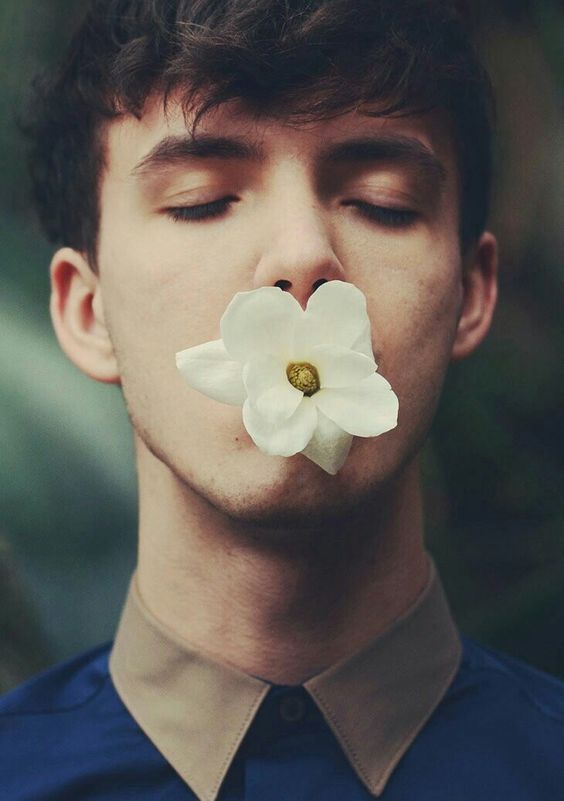 A self-portrait is an exercise of reflection and exploring your inner self (even if shown to others).
A self-portrait is an exercise of reflection and exploring your inner self (even if shown to others).
Final Words
Hopefully, these self-photography ideas got your creativity going. If you have any doubts or want to share more tips and ideas, comment below. We’d love to hear from you.
Highly Recommended
8 Tools for Photographers
Check out the 8 essential tools to help you succeed as a professional photographer.
Includes limited time discounts.
Learn more here
Self Portrait Ideas to Inspire You
What's the difference between a selfie and a self portrait? Selfies are usually taken spontaneously with a phone camera (often for the purpose of uploading images to social media). The self-portraits are more thoughtful and aim to explore deeper themes, such as identity. Today, self-portraits are a way for photographers to express either themselves or an idea from the opposite side of the camera.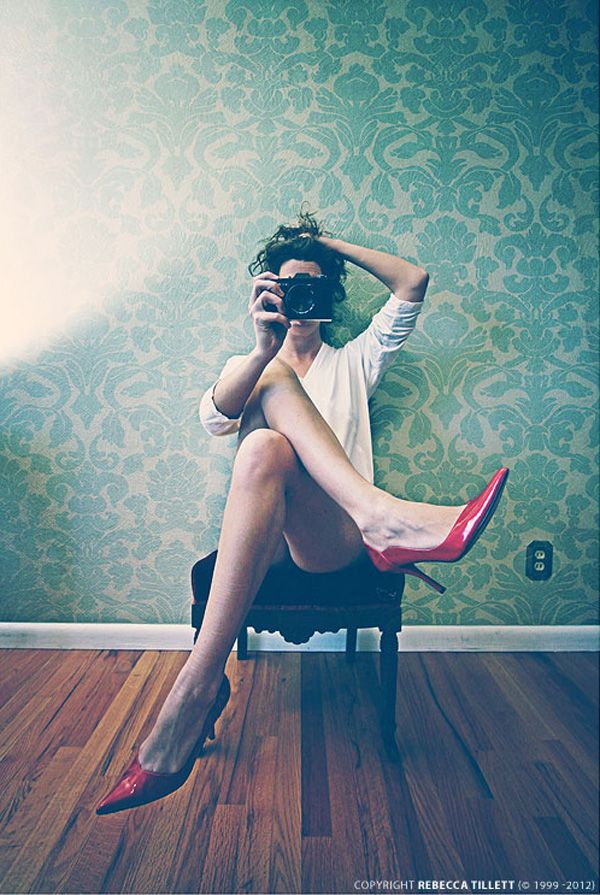
While some photographers take self-portraits for the sake of convenience, others seek catharsis. Some photographers use self-portraits as a documentary medium, while others appreciate the creative control and transformative process that taking a self-portrait can entail. Andy Warhol, Cindy Sherman and Vivian Mayer are famous self-portrait photographers.
Self-portraiture can be a complex form of photography because you must act as both the photographer and the subject. So a few basic pieces of equipment can help the creative process. You'll need a decent camera, and a tripod will help keep the camera in the right position for shooting. Also, while the self-timer feature on many cameras gives you time to get in front of the camera, the remote control is much more convenient and will let you trigger the shutter without having to run back and forth to the camera.
This article features Australian photographer Megan Kennedy's ideas for beautiful self-portraits:
1.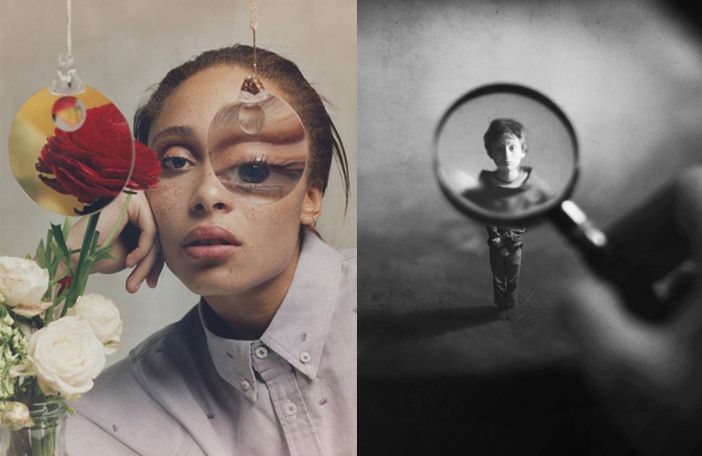 Try changing perspective
Try changing perspective
Many self-portraits are taken with a traditional straight perspective, but low or high perspective gives the image a sense of scale and dynamism. Both approaches have their merits: traditional portrait perspectives, pointing directly at the portrait, allow for intimate photographs, while perspectives that convey a unique point of view give the viewer a sense of movement or activity.
2. Turn on motion blur
Although many self-portraits are very sharp, slow shutter speeds can create spectacular visual effects. By setting your camera to a slower shutter speed and adding movement during the exposure, you can achieve unique, even surreal, results.
3. Use shadows
With thoughtful application of shadows, you can create dramatic effects; for example, you can hide areas of the face, body, and environment. Harsh light can be used to create dramatic or even mysterious patterns in a self-portrait, while shadows with a softer gradient can convey a more subdued atmosphere.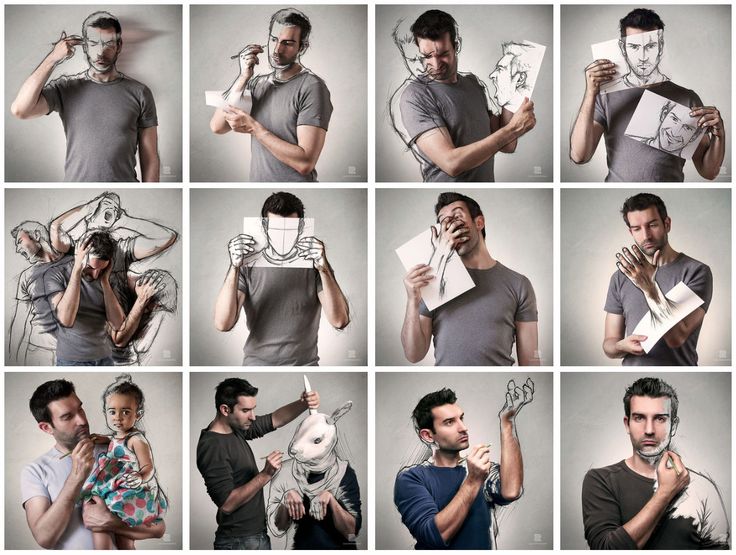
4. Experiment with minimalism
Minimalism is an abstract art form developed in America in the 1960s, typified by works of art composed of simple geometric shapes. Enjoying the beauty of simplicity, minimalist self-portraits emphasize the central figure by reducing superfluous details. Some minimalist self-portrait techniques use a plain background, shallow depth of field, and/or shadows or highlights to draw attention to the subject.
5. Emphasize color
Color in a self-portrait photograph can convey emotions and ideas, as well as attract attention. Using color as a tool for self-expression is an easy and effective way to create captivating self-portraits. While red can create an attractive shot, blue is more soothing and reflective. Color can indicate the place or time of the day, the emotions of the sitter, and the atmospheric tone of the image. Consciously incorporating colors into a self-portrait is a way to grab attention, set the stage, and enhance the subject's actions.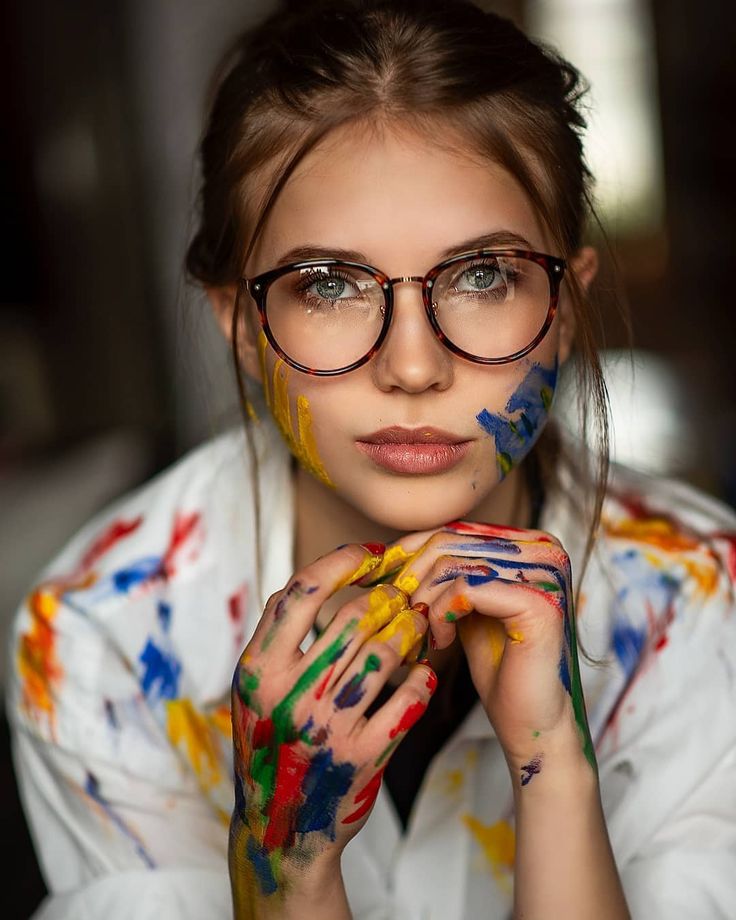
6. Go abstract
Abstract photographers strive to create visually appealing images without relying on traditional approaches to self-portraiture. A few examples of abstract self-portraiture include the use of intentional camera movement (ICM), subject movement during long exposure, and selective lighting. Double exposure can be another way to create abstraction in an image; By combining layers of photos, you can create a memorable result.
7. Take a faceless portrait
You don't always need the subject's face to create attractive self-portraits. Faceless self-portraits draw attention to the form and context that surrounds the subject because, by excluding the face, the self-portrait highlights other elements such as line, shadow, color, and light that can create atmosphere and mood. The use of props or interesting surroundings can also provide clues to the photographer's identity.
8. Experiment with depth of field
Depth of field determines the areas in a photo that appear sharp, so by enabling careful control of depth of field, you can combine in-focus and out-of-focus areas in an image.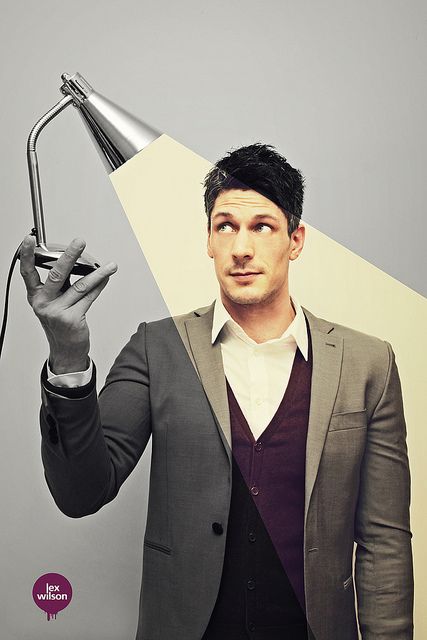 Bringing unfocused features to the forefront can add more storytelling and detail.
Bringing unfocused features to the forefront can add more storytelling and detail.
9. Take multiple shots
Sometimes one photo doesn't do the trick. The multiple exposure technique combines two or more exposures into a single image. In film photography, a frame of film is exposed multiple times, whereas in digital photography, many cameras have a multiple exposure feature. Darkroom or Photoshop techniques can also create multiple exposure effects. But no matter the method, multi-exposure self-portrait effects combine more information into one image, allowing you to delve deeper into messages and topics.
10. Work in black and white
Black and white can give a self-portrait a unique aesthetic that reduces distractions. The lack of color emphasizes the contrast, drawing attention to the play of light in the photo. Shooting a self-portrait in black and white can also highlight the unique density of the atmosphere and create a more formal, thoughtful, or documentary format.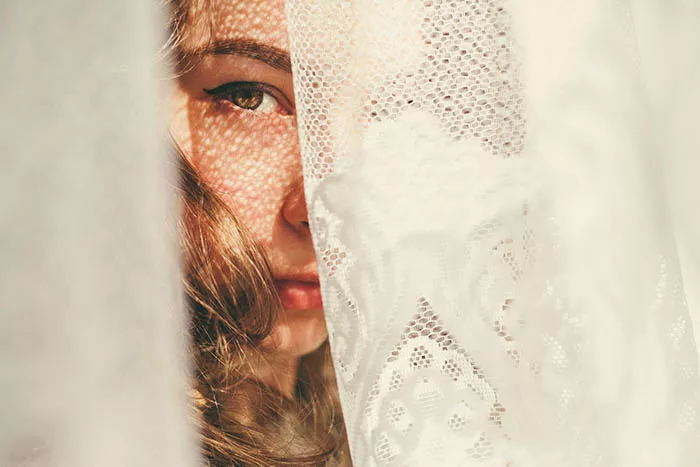
11. Experiment with reflections
Taking selfies on reflective surfaces has several benefits:
1. A camera may be included in the photo for additional information about the subject.
2. Taking a self-portrait from behind the camera simplifies exposure control.
3. A reflective surface can include the surrounding space, adding interest and context.
12. Take a walk in the fresh air
Many self-portraits are taken indoors in the studio. However, outdoor walks are a great way to expand on the story. Forests, grasslands, waterways or even urban nature are versatile environments that convey context and depth. Self-portraits in nature can also indicate the season, time, place, and connection to the surrounding landscape.
13. Introduce objects
Objects have been used to complement photography since the early days of self-portraits. Many famous photographic self-portraits involve the use of subjects that help convey mood or insight, such as Andy Warhol's 1979 Polaroid self-portraits.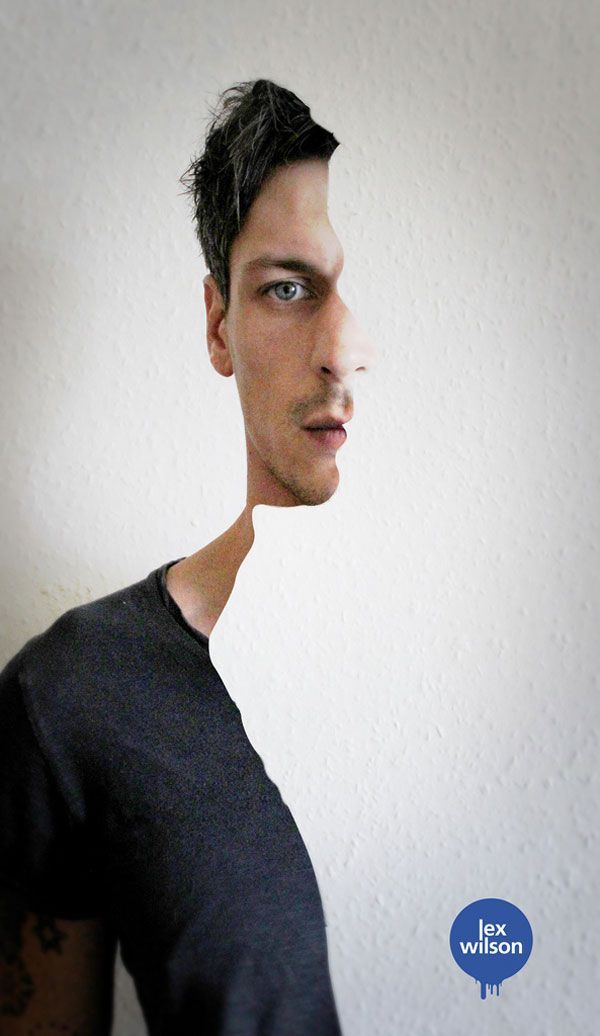 Of course, all self-portraits are as unique as the photographer himself, but additional elements can add to the storytelling of the overall image.
Of course, all self-portraits are as unique as the photographer himself, but additional elements can add to the storytelling of the overall image.
14. Play with light
Use soft morning light from a window or experiment with light painting. Harsh light coming through a curtain can create interesting lighting effects indoors, while natural light outdoors can create different temperature effects.
15. Take a photo on a photo
Photo can be split into layers; photographing yourself as a self-portrait is one layer, and incorporating a photo into a photograph is a way to add depth and intrigue to an image. Try using polaroids with your image, or use your photos on your phone. This adds an extra layer of dimension and playfulness to the portrait, inviting the viewer to take a closer look.
16. Take a photo of your passion
Self-portrait photography gives you the opportunity to share your personal views and experiences.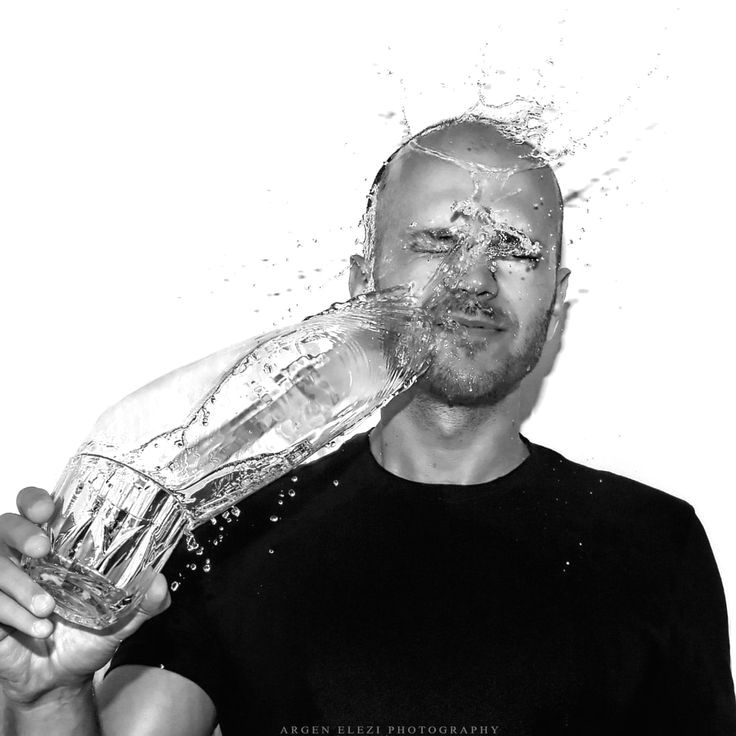 As such, many photographers choose to include additional information about themselves in their self-portrait, often in the form of what they like or are passionate about. Many photographers use the camera in their self-portraits, emphasizing their preferred creative approach. Other options may include taking a self-portrait in nature or shooting in an intimate home setting. Choose locations or props that will allow the viewer to better understand you as a person.
As such, many photographers choose to include additional information about themselves in their self-portrait, often in the form of what they like or are passionate about. Many photographers use the camera in their self-portraits, emphasizing their preferred creative approach. Other options may include taking a self-portrait in nature or shooting in an intimate home setting. Choose locations or props that will allow the viewer to better understand you as a person.
17. Experiment with objects in front of the lens
Sometimes adding simple objects or tools can change the atmosphere of an image. You can use prisms to deflect light before it reaches the camera's sensor for beautiful ethereal effects. You can also try attaching stockings to the front of the lens for a tight atmospheric effect. You can even add rainbow film and Vaseline to your camera lenses to create a romantic out-of-focus aesthetic.
18. Try Freeze Motion
Freeze motion photography is created when a fast shutter speed captures motion and translates it into a single physical frame of motion.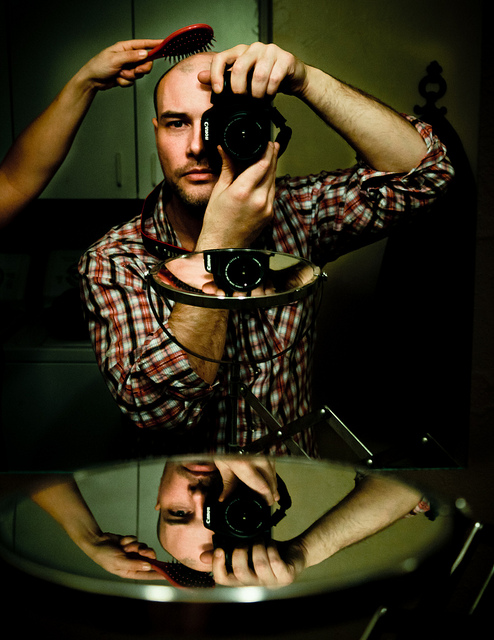 Motion pictures in sports photography are a common example of freeze-frame motion photography, but the technique can be applied to self-portraits as well. Set a faster shutter speed (starting at 1/250s) and use the camera's timer or remote control to activate the exposure as soon as you start moving.
Motion pictures in sports photography are a common example of freeze-frame motion photography, but the technique can be applied to self-portraits as well. Set a faster shutter speed (starting at 1/250s) and use the camera's timer or remote control to activate the exposure as soon as you start moving.
19. Take a self-portrait in landscape
The landscape image is wider than it is tall, and the portrait image is taller than it is wide. Portrait-oriented images are named so for a reason: they have historically been used for portrait photography. But capturing the essence of a person is not limited to portrait orientation, and you can experiment with landscape orientation for attractive results.
20. Photo details
Not all self-portraits need to include the whole person, and zooming in for a closer view can reveal a lot of information. Capturing details such as hands or eyes can complement full-length portraits or head shots, although they can also stand alone as an intimate depiction of the subject's physical condition. Scars tell a story, and so do wrinkles. Detailed self-portraits document the stories revealed by the body over time.
Scars tell a story, and so do wrinkles. Detailed self-portraits document the stories revealed by the body over time.
21. Try cropping
Framing is a common compositional technique in all forms of photography. Doorways and windows are great ways to frame a self-portrait, while other objects such as plants, holes in objects, shadows, puddles, old keyholes, and mirrors can also add depth and effect to a self-portrait.
22. Links to other creative works
Countless artists create self-portraits, and you can always use these images for your own photography. Some preliminary research will open up creative possibilities for self-portraits, plus you will be able to emulate and pay homage to self-portraits (or portraits) by other artists of the past.
Resume
Self-portrait photography can be a lot of fun. Self-portraiture is a diverse field of photography, rich in self-expression and creativity, from sculpting using light and shadow to worshiping artists of the past.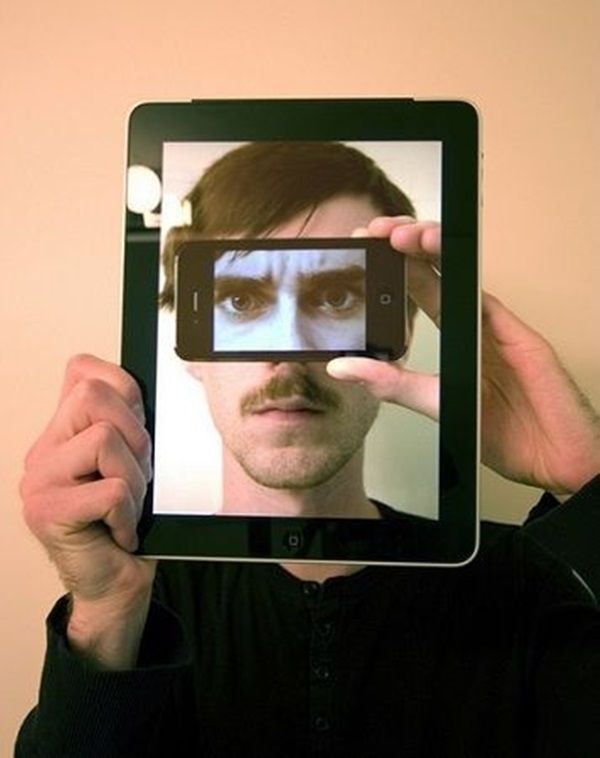
(Visited 224 times, 1 visits today)
How a photographer can take a self-portrait. Life hacks, equipment, cool ideas | Articles | Photo, video, optics
A person with a camera often finds himself in the situation of a shoemaker without boots. He has pictures of all friends, girlfriends, acquaintances and relatives. Any photos, except pictures of himself. Or there are a couple of photos taken also by friends and acquaintances. But such that it is better not to show anyone.
And it also happens that the author has some kind of super-specific idea, and any, even the most sensitive, attentive and obedient model still brings something of her own to the shooting.
And for some, shooting self-portraits is a way of self-expression. For example, Romanian photographer Monica Lazar struggles with anxiety and social phobia through self-portraits.
Self-portrait of Monica Lazar / Photo: monicalazar.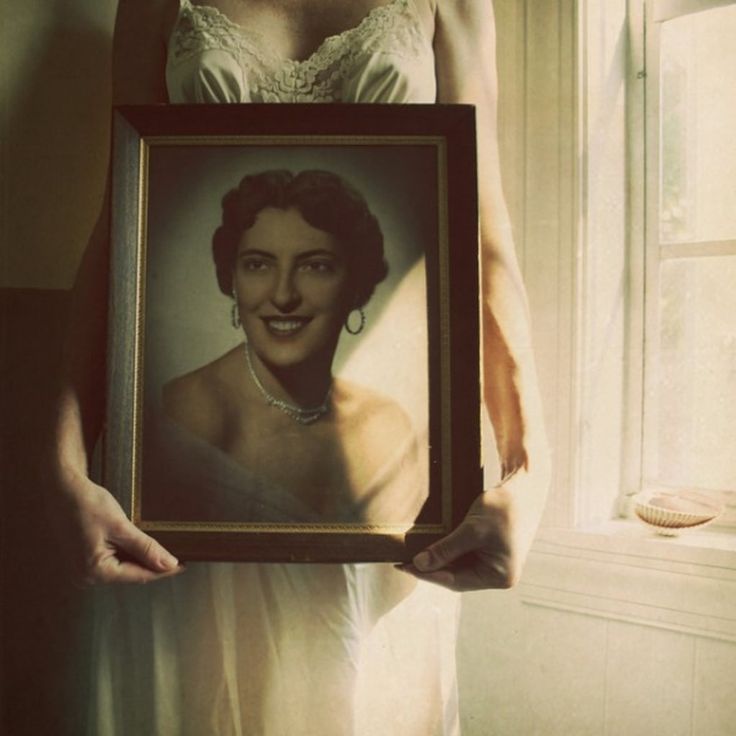 ro/personal-project
ro/personal-project
How to take a self-portrait without additional equipment
The easiest way to take a selfie is to use the delayed start timer. On the plus side, it can be used even if you have nothing but a camera or a smartphone. No remote control, no synchronizer, no assistant.
By the way, a life hack in case you don't have a tripod at hand: a primitive tripod can be made from a couple of packs of buckwheat or pasta. Shooting with this design is more convenient than, for example, piling the camera on a stack of books. Buckwheat inside the package moves and allows you to some extent tilt the camera in different directions and control the angle.
Of the minuses: when shooting with the self-timer, problems with focusing may occur. When you are going to shoot a person, he is in your frame and you can focus on him. When you are going to shoot yourself, you are not in the frame yet. Nothing to focus on. You can, of course, entrust everything to automation and hope that it will focus where it is needed.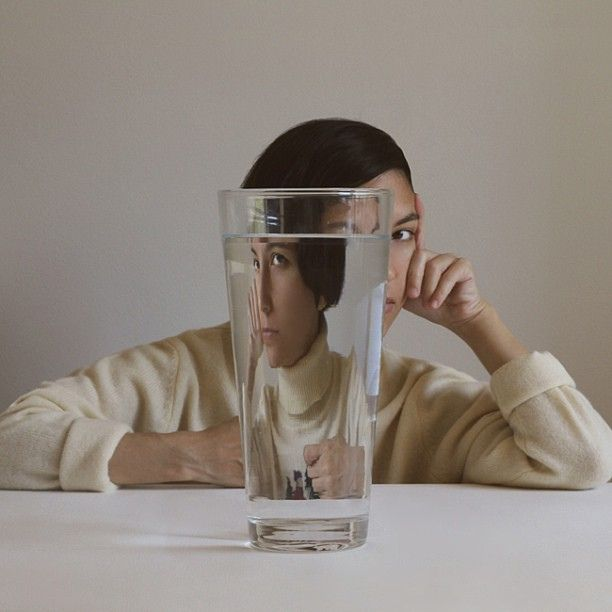 But in this case, there is a chance to get such a result.
But in this case, there is a chance to get such a result.
Such misses are especially frequent if you shoot with fast optics / Photo: unsplash.com
To focus accurately, switch to manual focus mode (available for both cameras and phones). Then find something that will lie down or stand in your place for a while. For example, you can put a pile of pillows on the chair where you will sit. Focus on your silent assistant, move it away and start the self-timer. Now the focus will be exactly where it should be.
Another problem will arise if you plan to act out a particular emotion or catch yourself in motion. For example, in a jump.
To get a self-portrait like this with delayed start, get ready to do a lot of takes / Photo: unsplash.com
When you shoot another person, you press the shutter when you need to. And at the time of shooting when using the self-timer, you still need to get there. Many cameras start flashing and glowing at the moment of shooting, but this still does not completely protect against unsuccessful takes.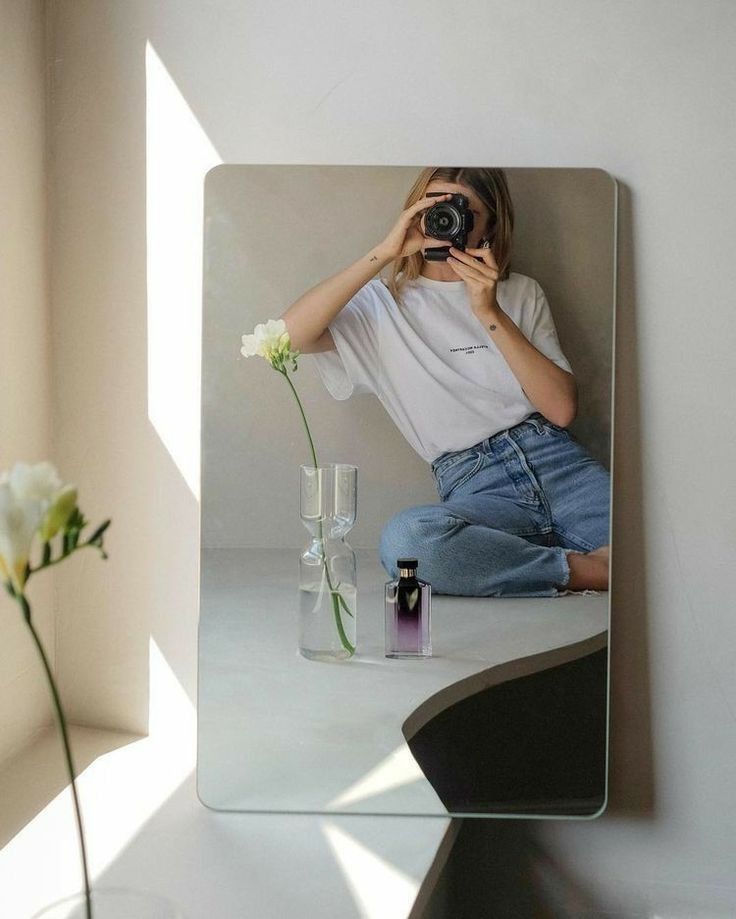
To make it easier to capture the moment, turn on the continuous shooting mode. So there will be more chances that at least one frame from the series will be successful.
Taking self-portraits with in-camera Wi-Fi
Most recent mirrorless cameras have the ability to control the camera from your phone. For example, Canon EOS 6D Mark II has Wi-Fi. To shoot via Wi-Fi, you need a smartphone and a special application. Each camera system has its own.
- for Nikon - SnapBridge;
- for Canon - Canon Camera Connect;
- from Fujifilm - Camera Remote;
- Olympus - OLYMPUS Image Share;
- from Sony - Imaging Edge Mobile;
- for Panasonic - LUMIX Sync.
Install the application, connect to the camera via Wi-Fi. This is what it looks like on the Fujifilm X-T20.
Through the application, you can focus, set the desired settings and shoot / Photo: Alisa Smirnova, Fotosklad.Expert
It is convenient that you can be in front of the camera and see yourself.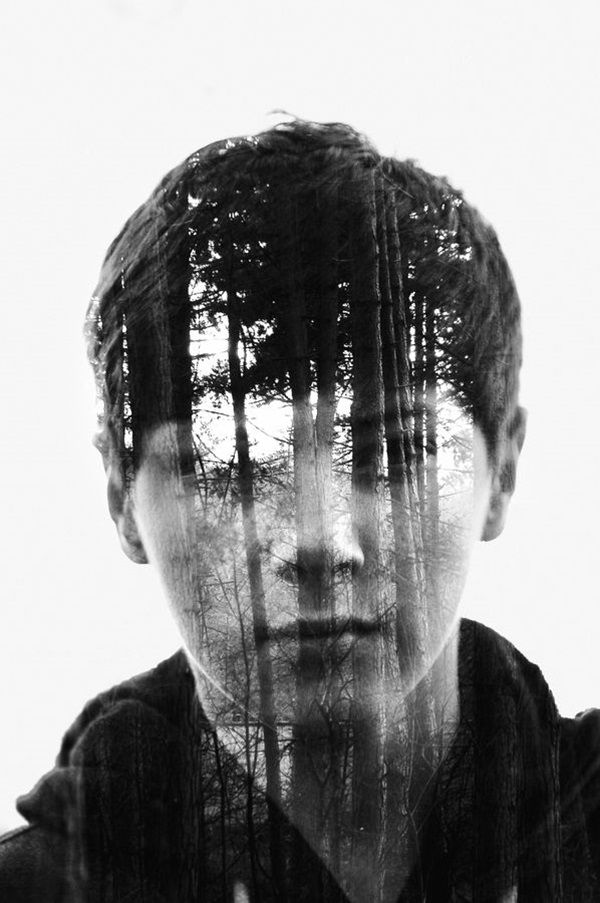 This allows you to adjust the frame as needed. Finished pictures can be immediately imported to your phone using the same application.
This allows you to adjust the frame as needed. Finished pictures can be immediately imported to your phone using the same application.
The only inconvenience is that you have to figure out where to put your hand with a smartphone if you don't want it to be in the frame.
Self-portrait shooting with remote control
If the camera does not have a Wi-Fi module for self-portrait shooting, you can use the remote control. This gadget can be connected to any SLR and mirrorless camera.
There are several types of remote controls. Some work on the principle of a TV remote control, transmitting an infrared signal to the camera. Others connect to the camera via Bluetooth. The choice of remote control depends on the camera model.
Wired remote controls are also available. To use them, the camera must have a port for connecting a remote control. Usually these are advanced and professional models. For example Nikon D780, Canon 90D, Olympus OM-D E-M1 Mark III.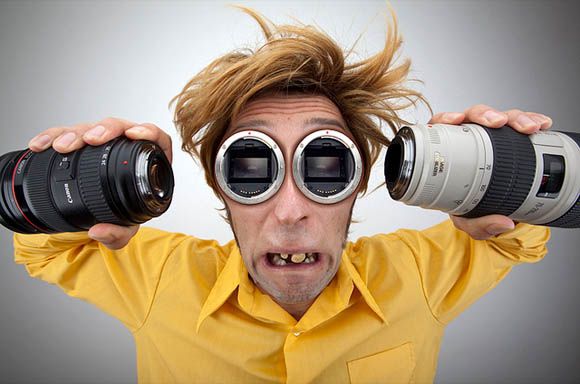
Wireless remote control / Photo: fotosklad.ru
The remotes eliminate the need to catch the moment (as you have to do when working with delayed release). But in terms of the convenience of framing and focusing, they lose to shooting through a smartphone.
The remote control is a useful, but rather highly specialized gadget. Not every photographer has it, and not everyone needs it.
In some cases, instead of a remote control, you can use a set of radio flash triggers. Usually synchronizers are used to control an external flash. The camera sends a signal to the transmitter that a flash is needed, the receiver transmits it to the flash, the flash makes a “puff”. We will do everything in the opposite direction: with the help of a synchronizer, give the camera a signal that it is time to shoot.
To use this method, the camera must have a port for connecting the remote control, and the set of synchronizers has a wire suitable for this port.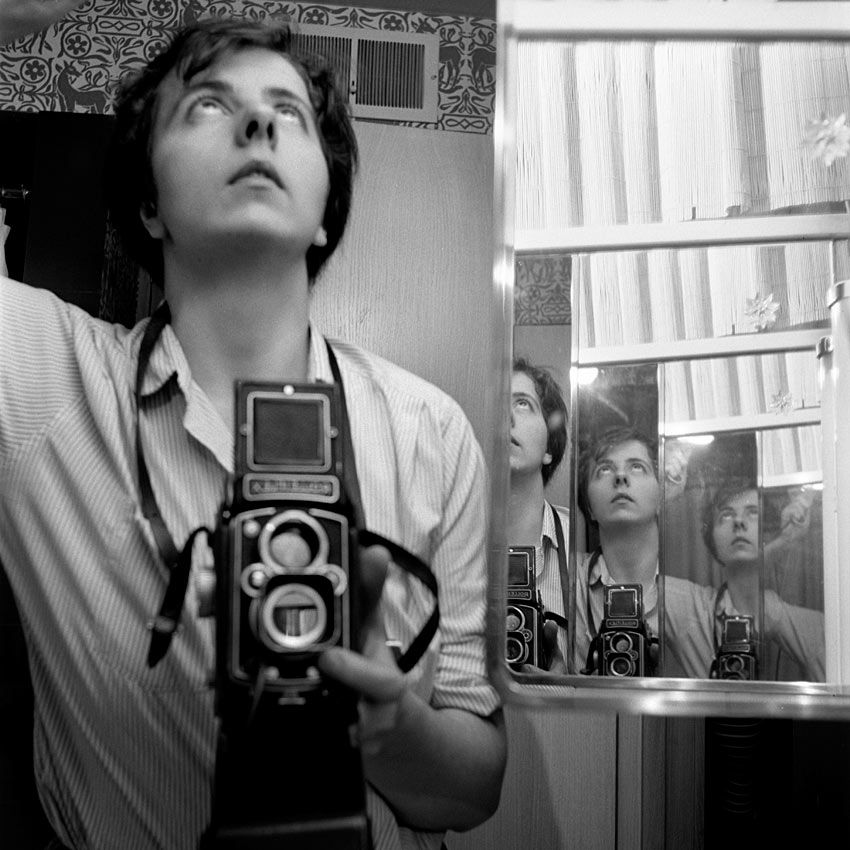 You need to connect the synchronizer receiver exactly to the remote control socket of your camera. For example, Yongnuo RF-603 has one. These synchronizers have versions for Nikon and for Canon.
You need to connect the synchronizer receiver exactly to the remote control socket of your camera. For example, Yongnuo RF-603 has one. These synchronizers have versions for Nikon and for Canon.
Accordingly, it is necessary that the camera has a port for connecting the remote control. Usually these are advanced and professional models. For example Nikon D780, Canon 90D, Olympus OM-D E-M1 Mark III.
Wired synchronizer will work as a remote control. Press the button on the transmitter - the camera starts shooting.
See also:
Types of synchronizers. How to set up the synchronizer
How to take a self-portrait with a drone
A drone is both a good self-portrait tool and a good idea of how to shoot. A copter is a tripod, a remote control, and unusual angles that can be used as the basis for the concept of a shot, all in one bottle.
Drone self-portrait on a pink lake / Photo: unsplash.com
When shooting a drone self-portrait, try to choose angles from which people rarely see familiar places and objects.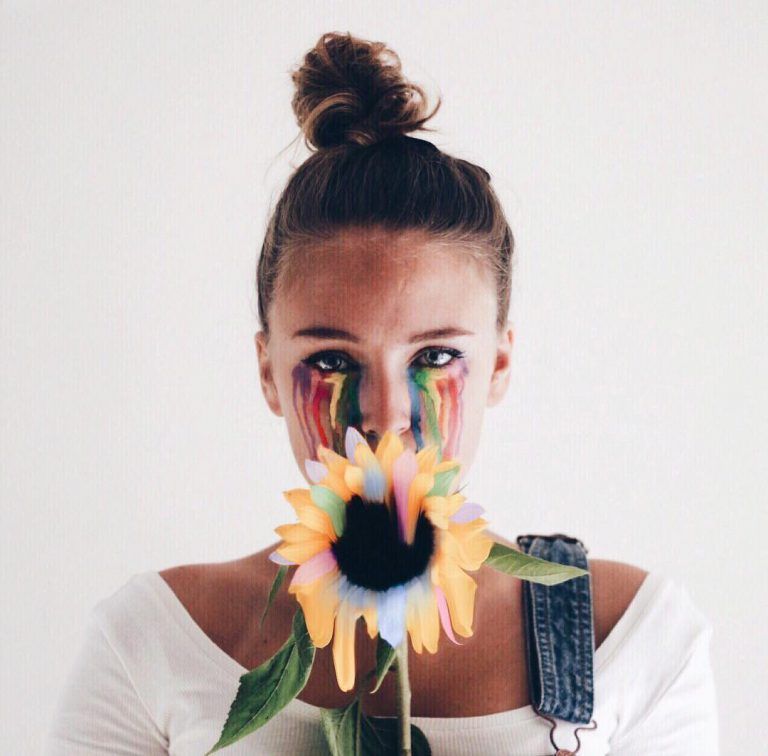 For example, you can shoot yourself on the beach holding the drone above the water, or stand on the edge of a roof or other hill, or lie down on the ground and shoot strictly from above.
For example, you can shoot yourself on the beach holding the drone above the water, or stand on the edge of a roof or other hill, or lie down on the ground and shoot strictly from above.
View of the field from above creates the effect of a sea of grass / Photo: 121clicks.com
You can use additional props to create unusual photos.
Photo from an unusual photo project taken from a bird's eye view. Author — Kostas Spatis / Photo: spathumpa.com
Cool ideas for a self-portrait photographer
Technique is only half the battle. To get a good shot, you need an interesting idea. We have collected some spectacular self-portrait ideas that you can use in your work.
Mirrors. If you think that a picture with a camera in the mirror is the last century, you are wrong. More precisely, not quite right. This is the last century.
A woman and her kodak.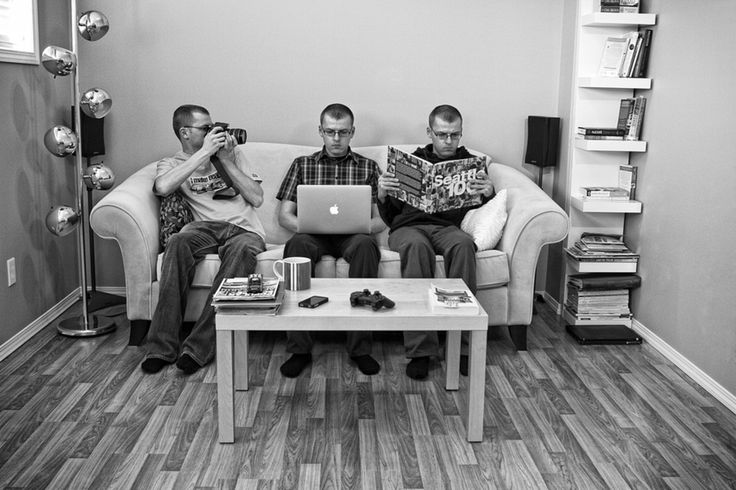 This picture is over a hundred years old. This is the first self-portrait in history with a mirror / Photo: pikabu.ru
This picture is over a hundred years old. This is the first self-portrait in history with a mirror / Photo: pikabu.ru
A lot of time has passed since the shooting of this shot, today it is not necessary to do everything so straightforwardly and just shoot yourself in the mirror. With mirrors, you can create very creative things. It may be interesting to look at a self-portrait using a broken mirror or several small mirrors. Shooting outdoors with mirrors looks good.
Self-portraits by Chinese photographer Ziqian Liu / Photo: ziqianqian.net
Colored light. The powerful trend of the last few years is well established and widely used.
Typically, two light sources of different colors are used for such shooting /Photo: unsplash.com
To get color light, you can use gel filters for flashes or RGB lamps. More details about shooting with colored light can be found here.
Double exposure. Multiple exposure or double exposure is a creative technique in photography where one frame is superimposed on another. Images are mixed, intertwined and completely new meanings are formed. Good idea for a self-portrait.
Multiple exposure or double exposure is a creative technique in photography where one frame is superimposed on another. Images are mixed, intertwined and completely new meanings are formed. Good idea for a self-portrait.
You can mix two portraits, you can portrait with a landscape or still life / Photo: unsplash.com
You can read more about how to take such photos here.
Me and my alter egos. Such pictures can be obtained using composite photography. This technique can be considered a special case of multiple exposure.
If you wish, you can dress your individual “personalities” in different clothes and act out different emotions / Photo: vk.com/yozheeg
To get such a shot, you need to shoot from a tripod and then combine individual images in Photoshop using layers and masks.
Face framed with food (or no food). Such photos began to appear in social networks the last couple of years.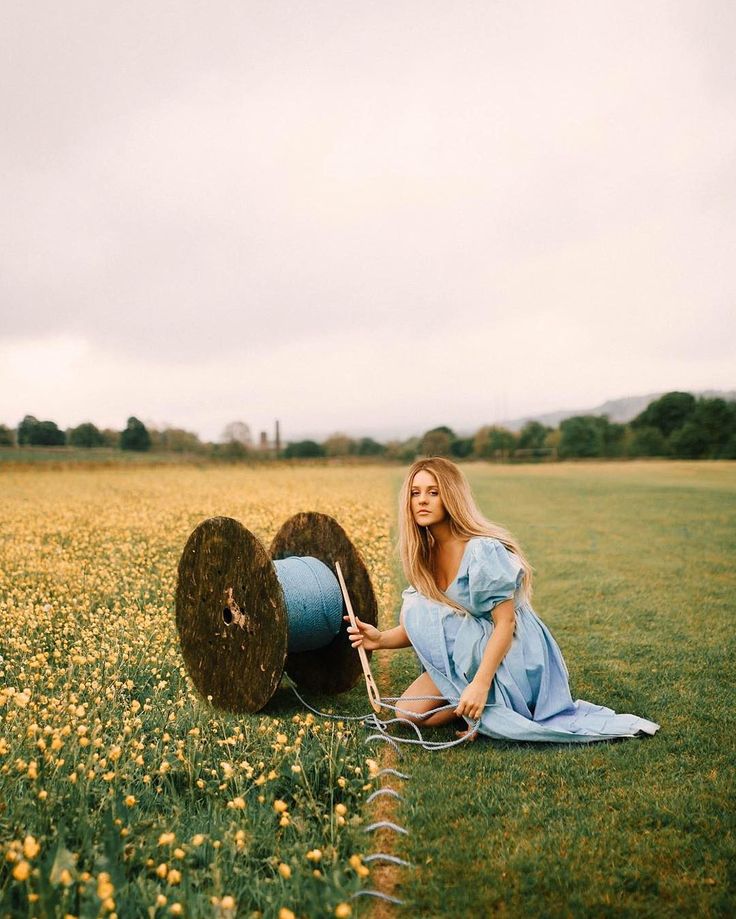
I'm overwhelmed! / Photo: Alisa Smirnova, Photosklad.Expert
It is not difficult to take such a photo: you will need a lot of carrots, a tripod, one flash and a pizza box. We cut a hole in the box to fit our face, put our head in it, lie down on something flat and put props in the box.
When shooting such pictures, an assistant is very useful, who will correct the props if some kind of carrot is unsuccessfully laid down. As props, you can use fruits, berries, sweets, coffee, popcorn, flowers, and so on - that's enough fantasy.
A tripod is useful for getting this angle. You want a model where the barbell can be pulled out and rotated 90 or 180 degrees. For example, Manfrotto MKBFRA4GTXP-BH Befree GT XPRO is suitable. When shooting from this angle, be sure to hang a weighting agent on the tripod so that the camera does not outweigh and it does not fall on your face.
Experiments with appearance. Creative makeup, hair, body art - all this helps to make the portrait more interesting.

